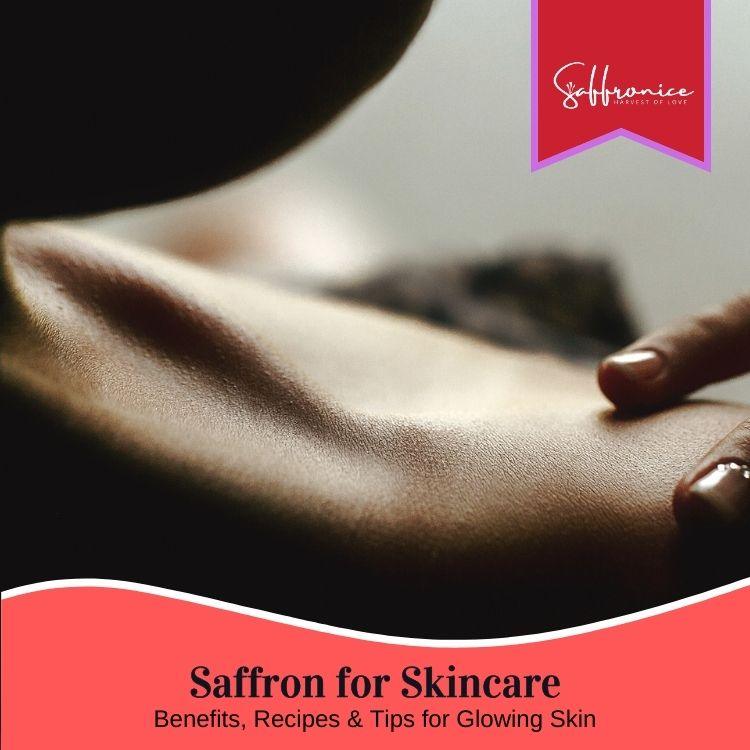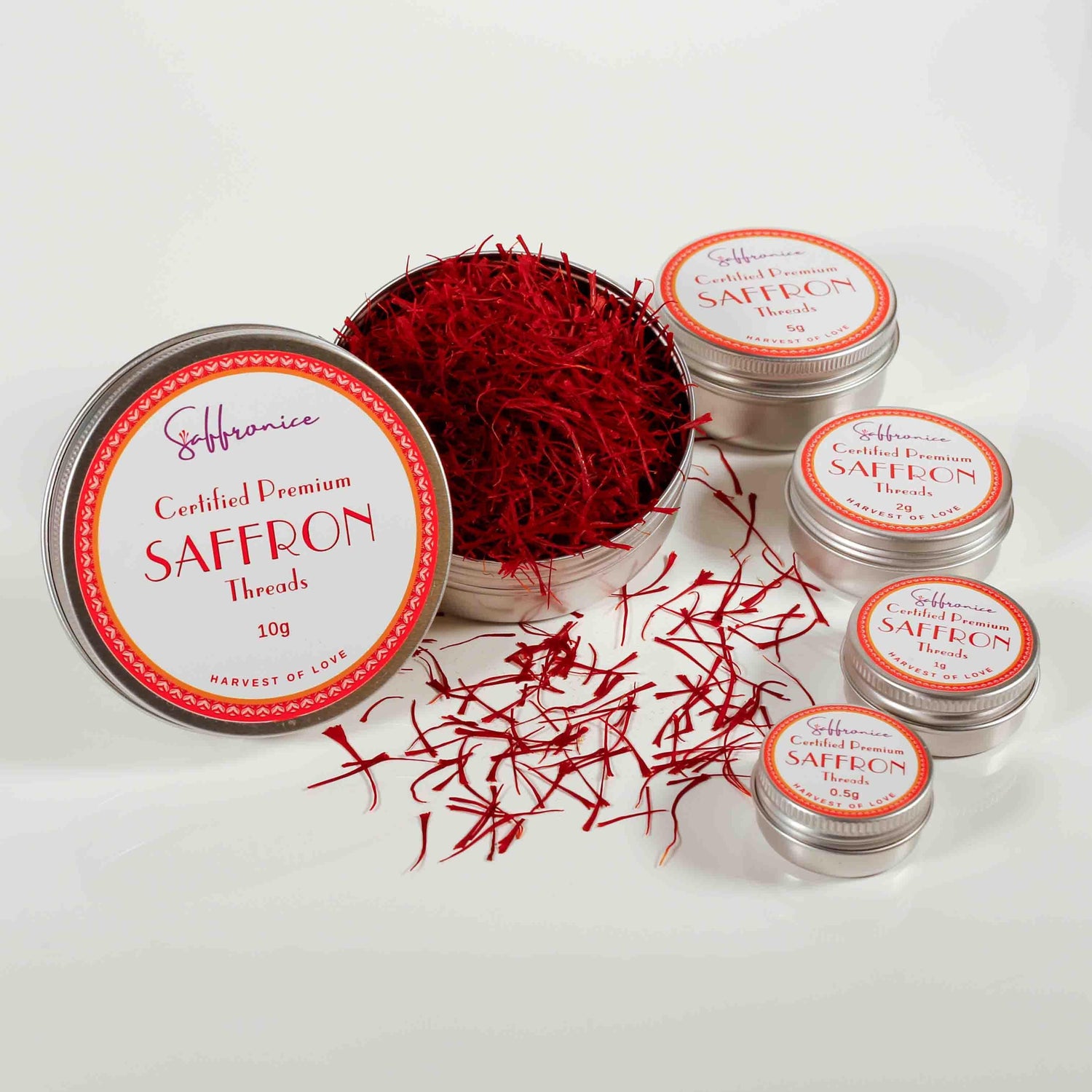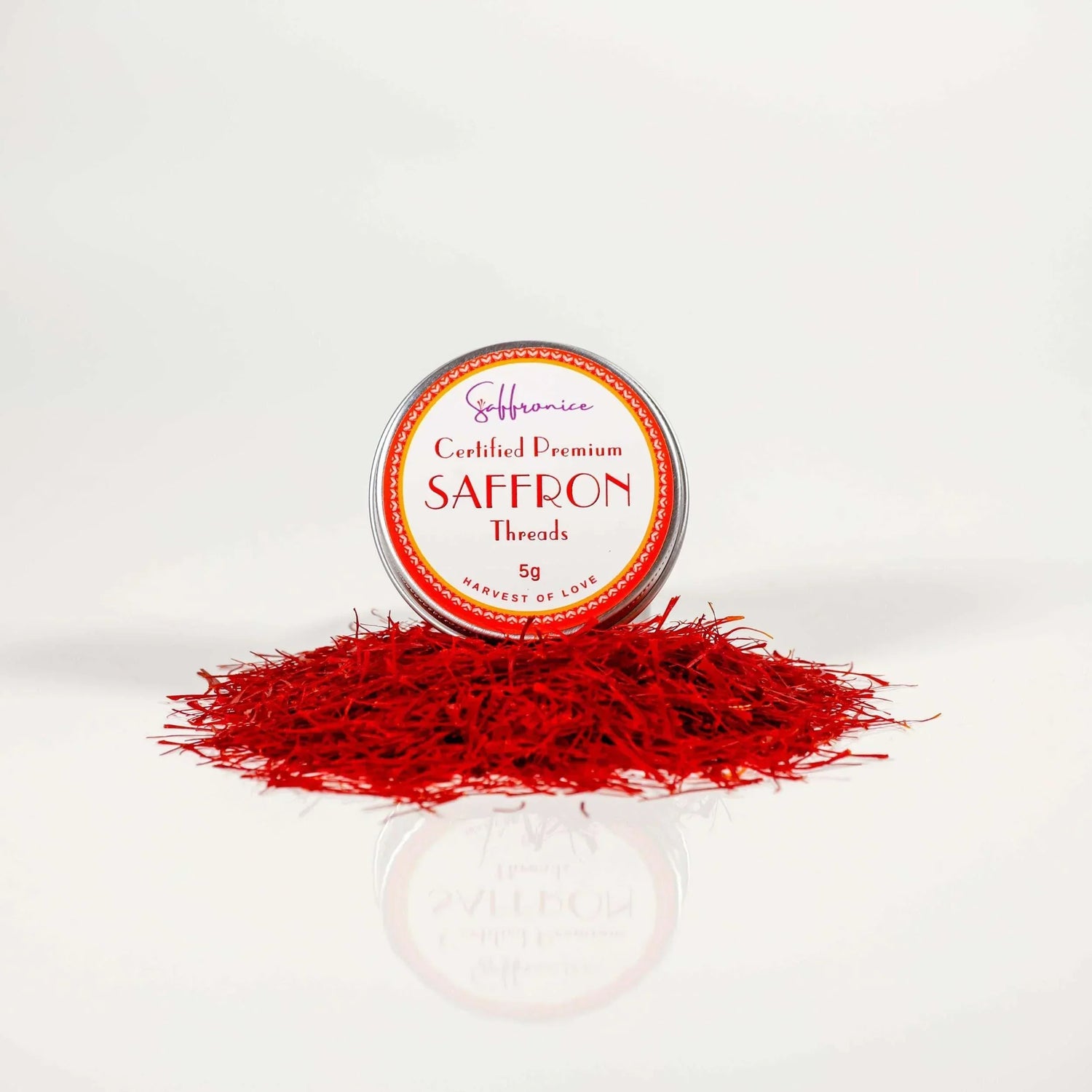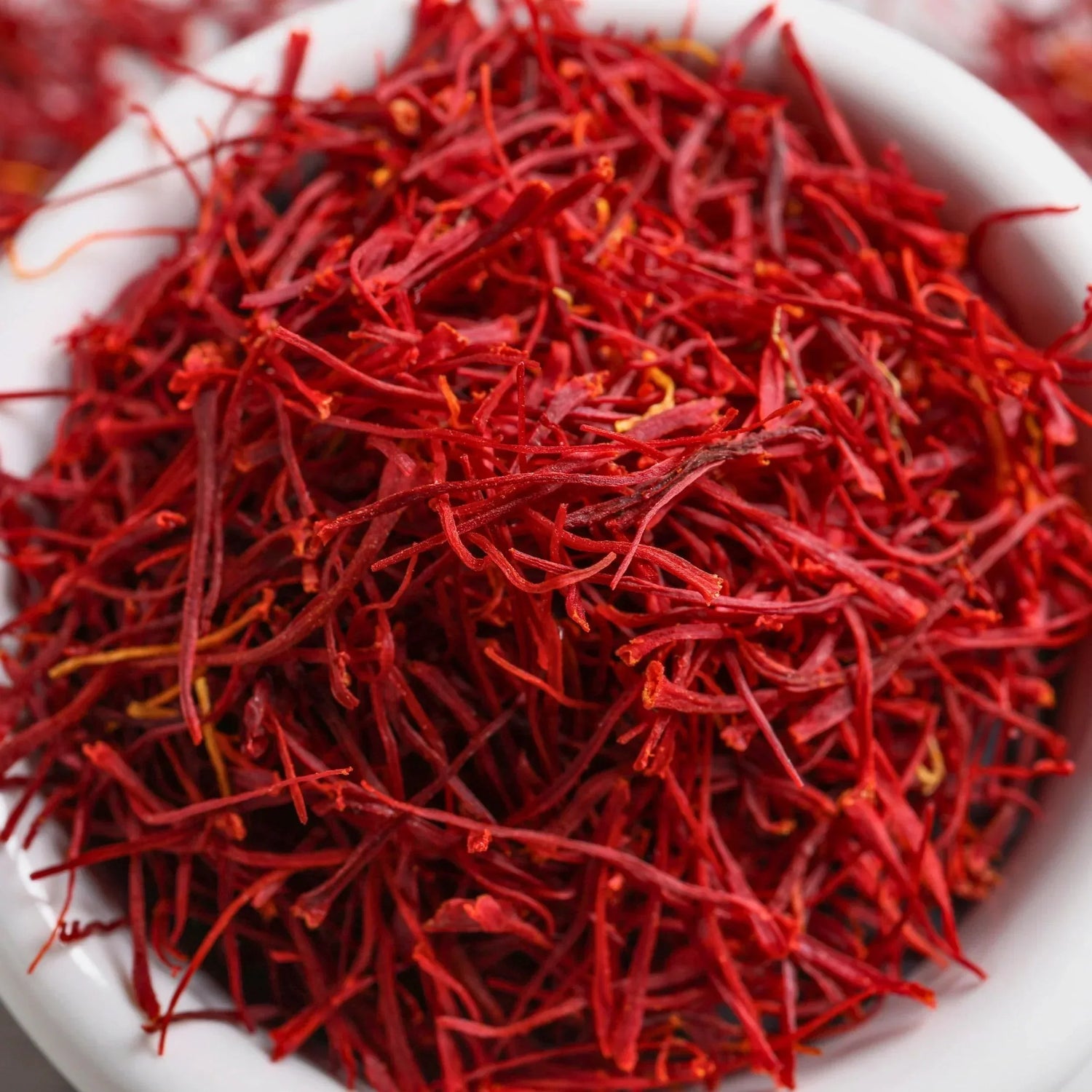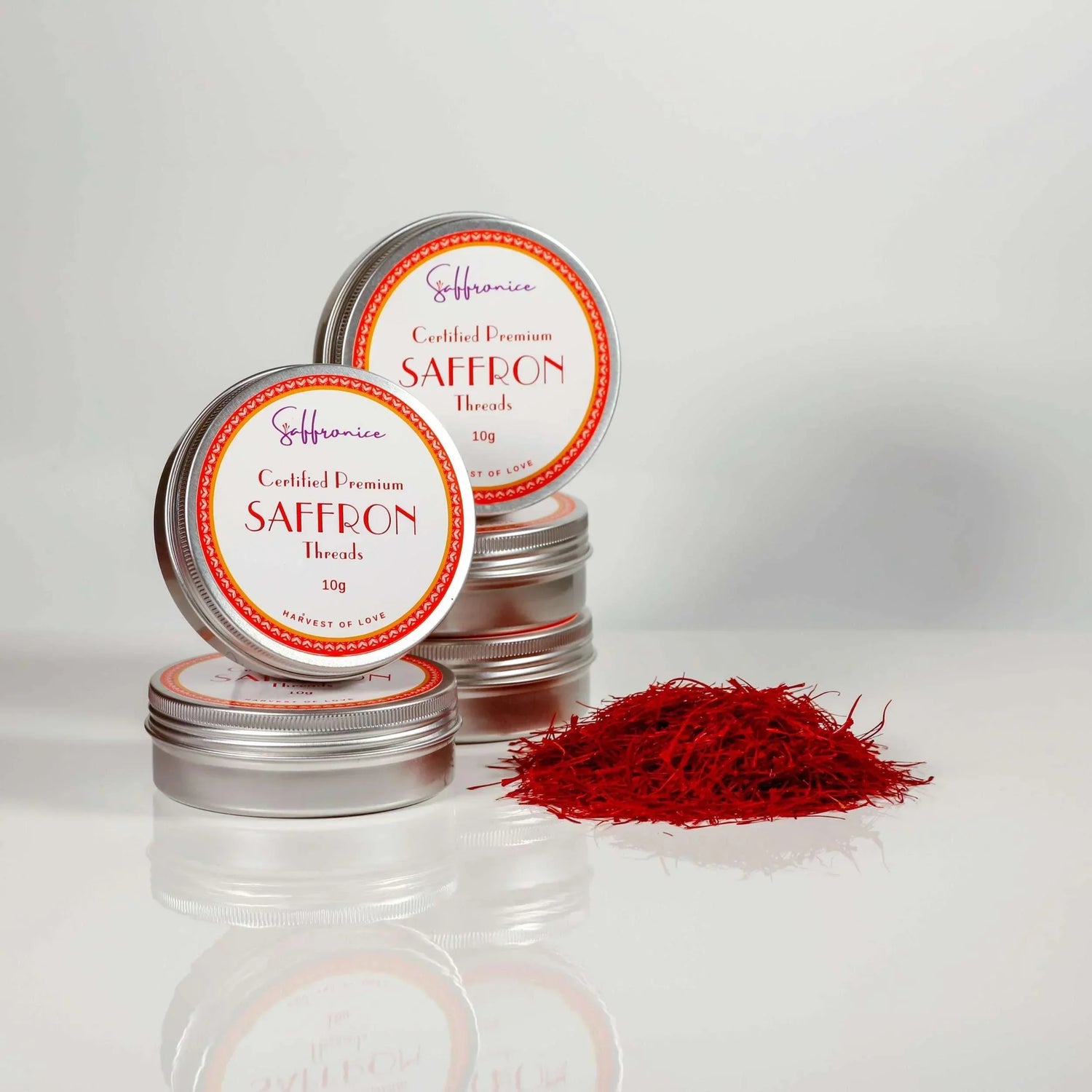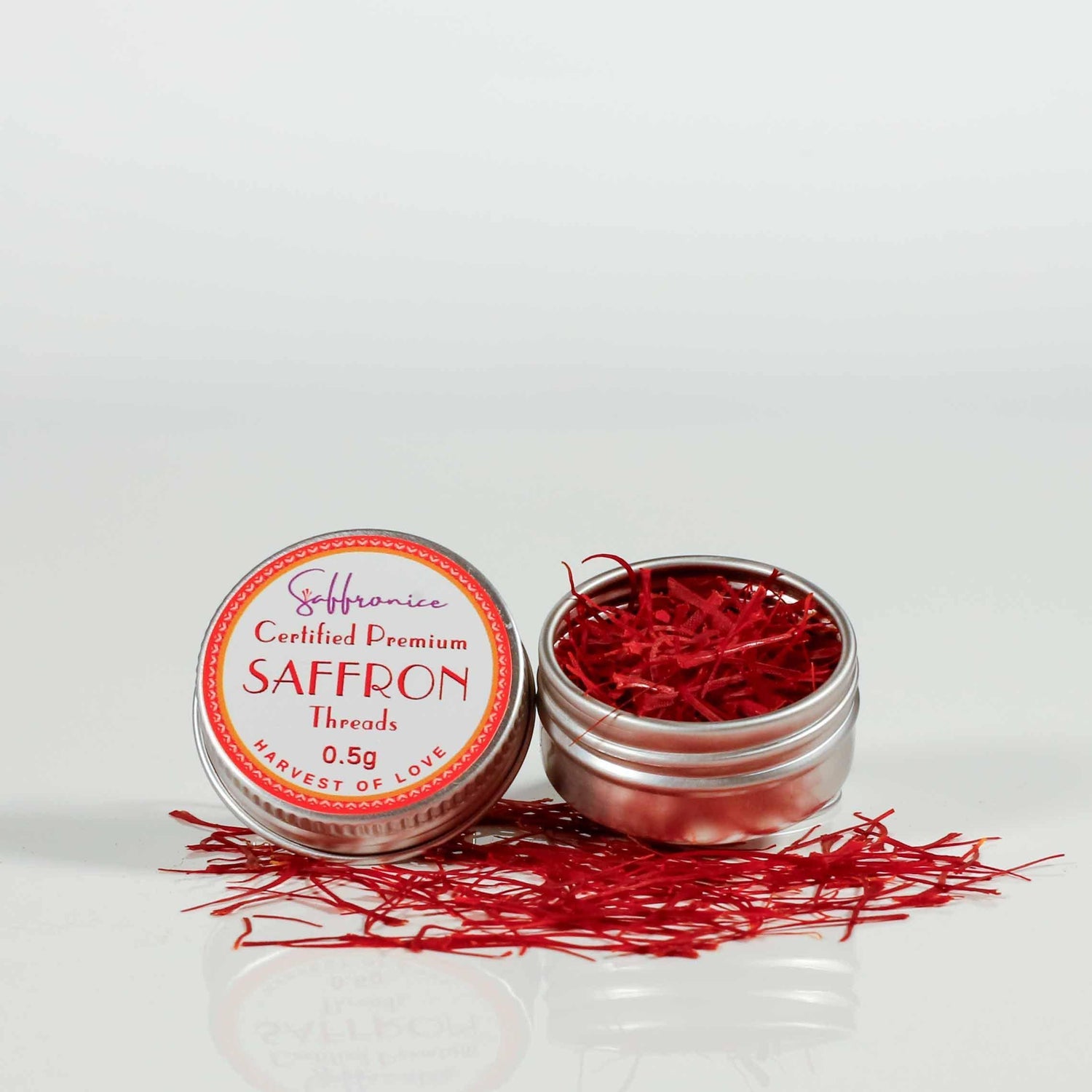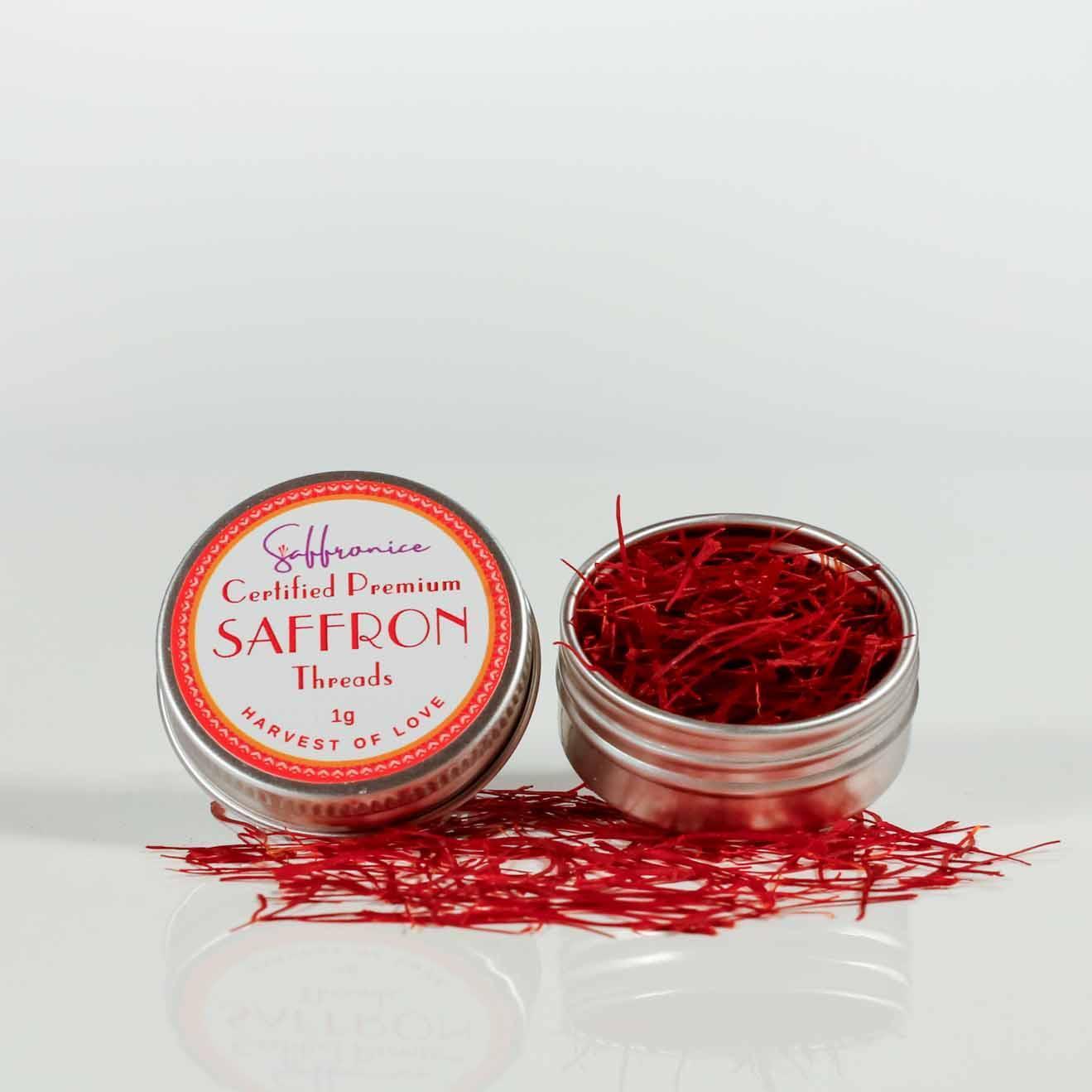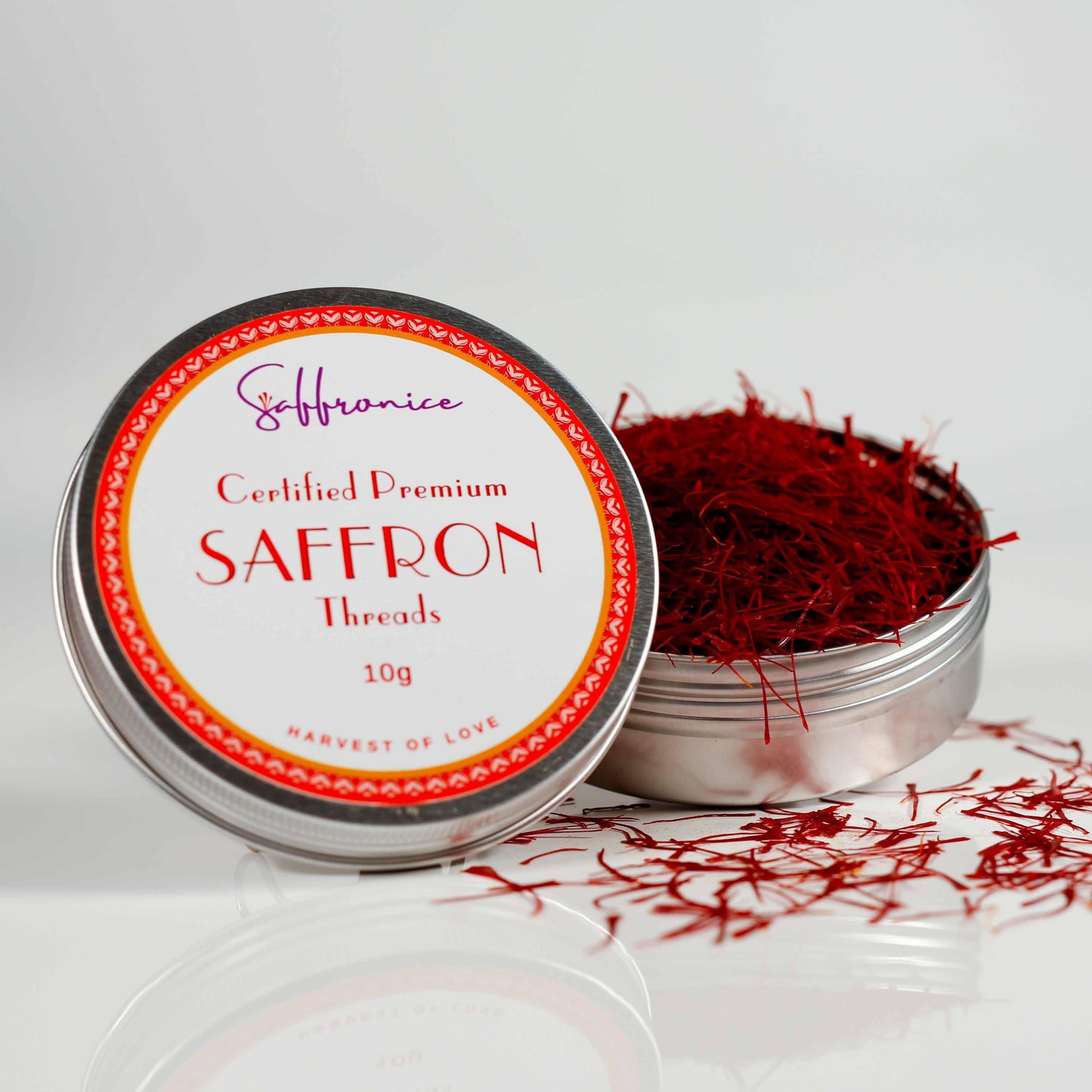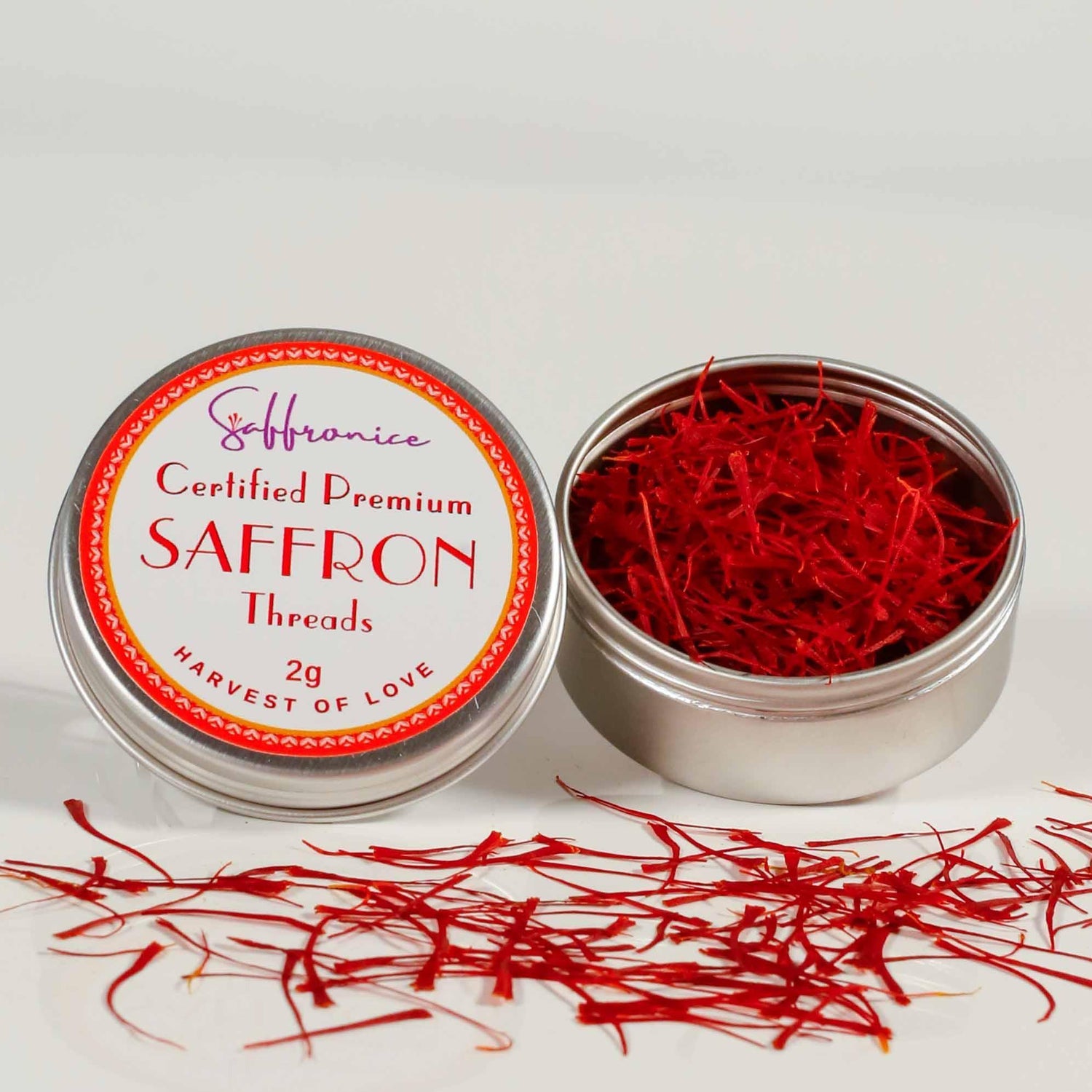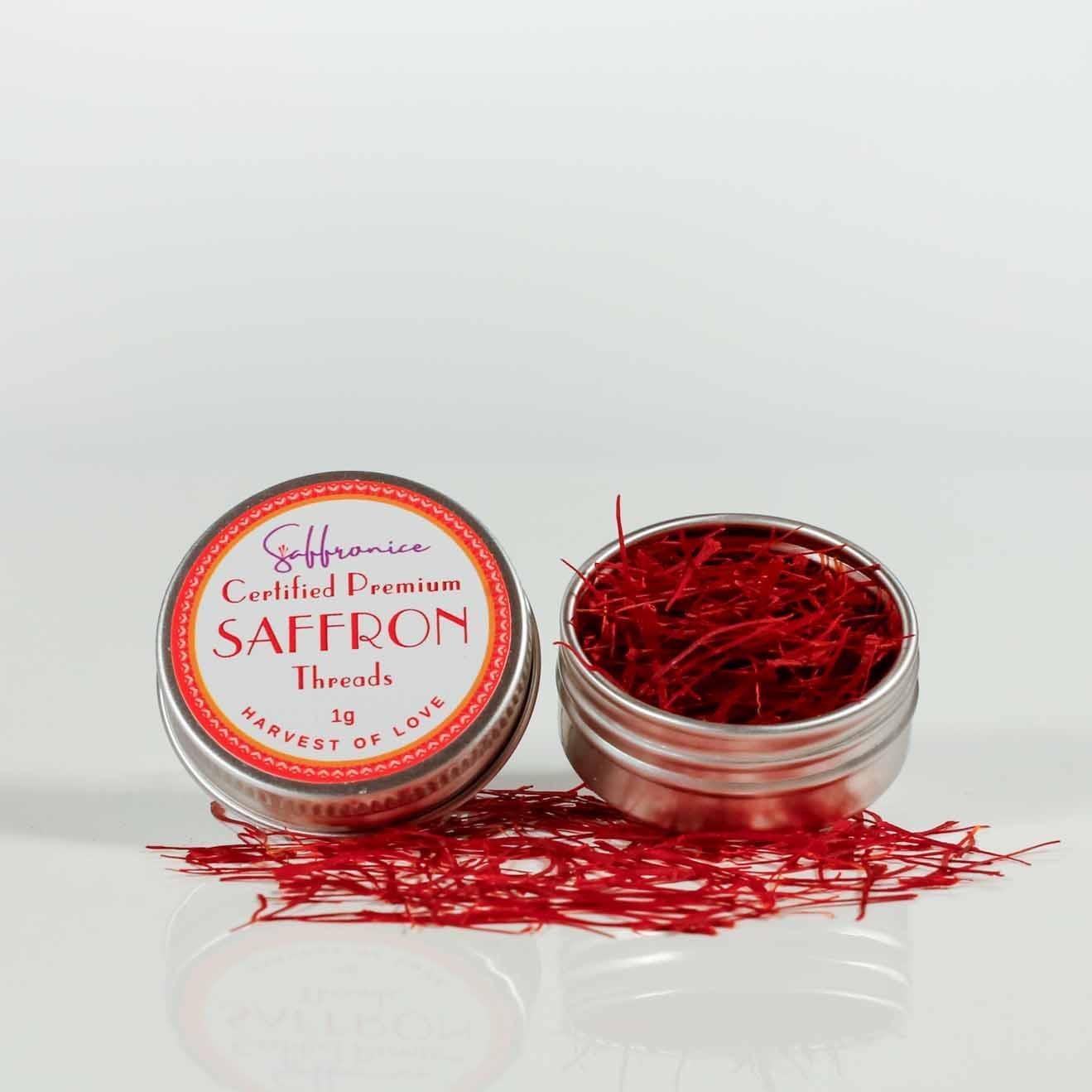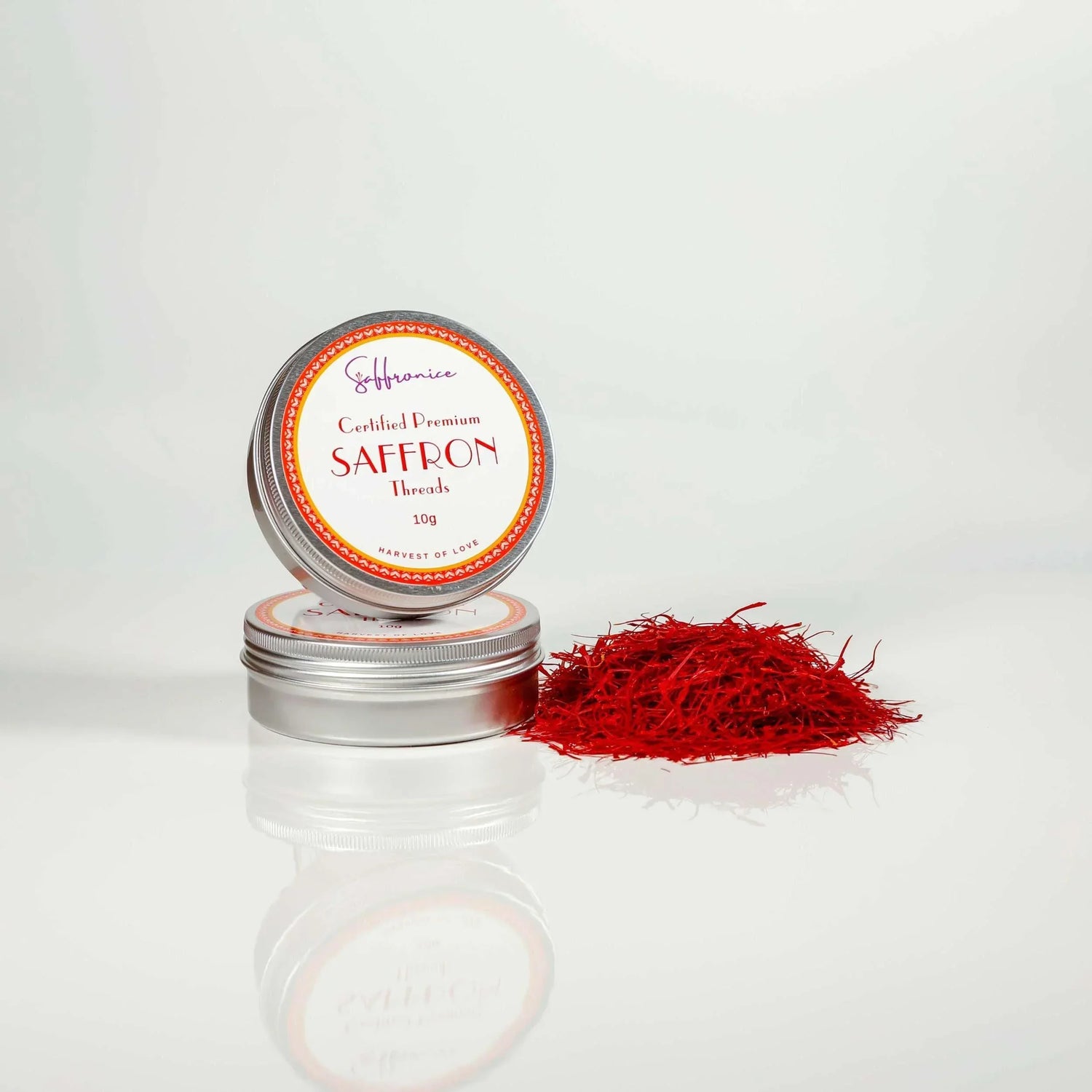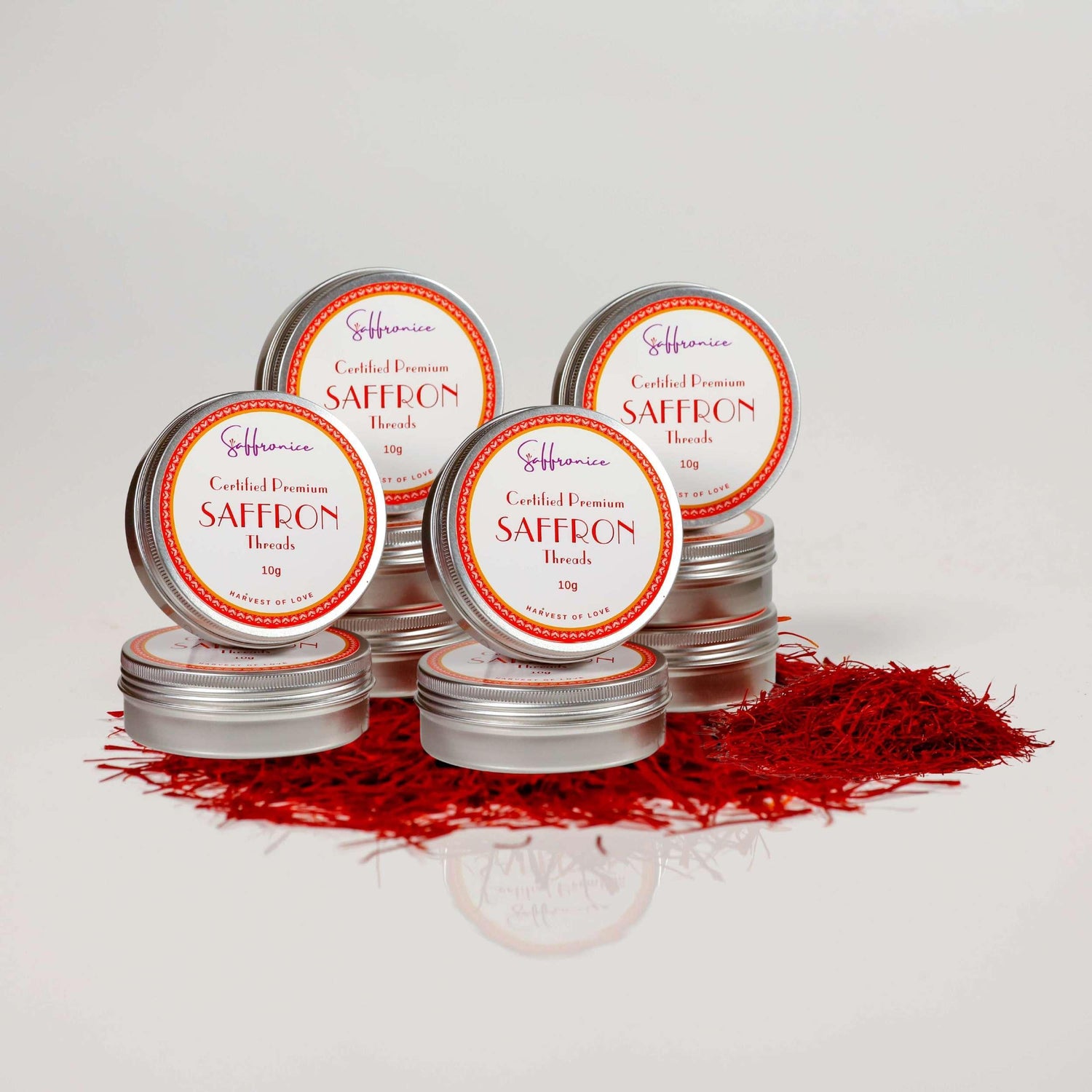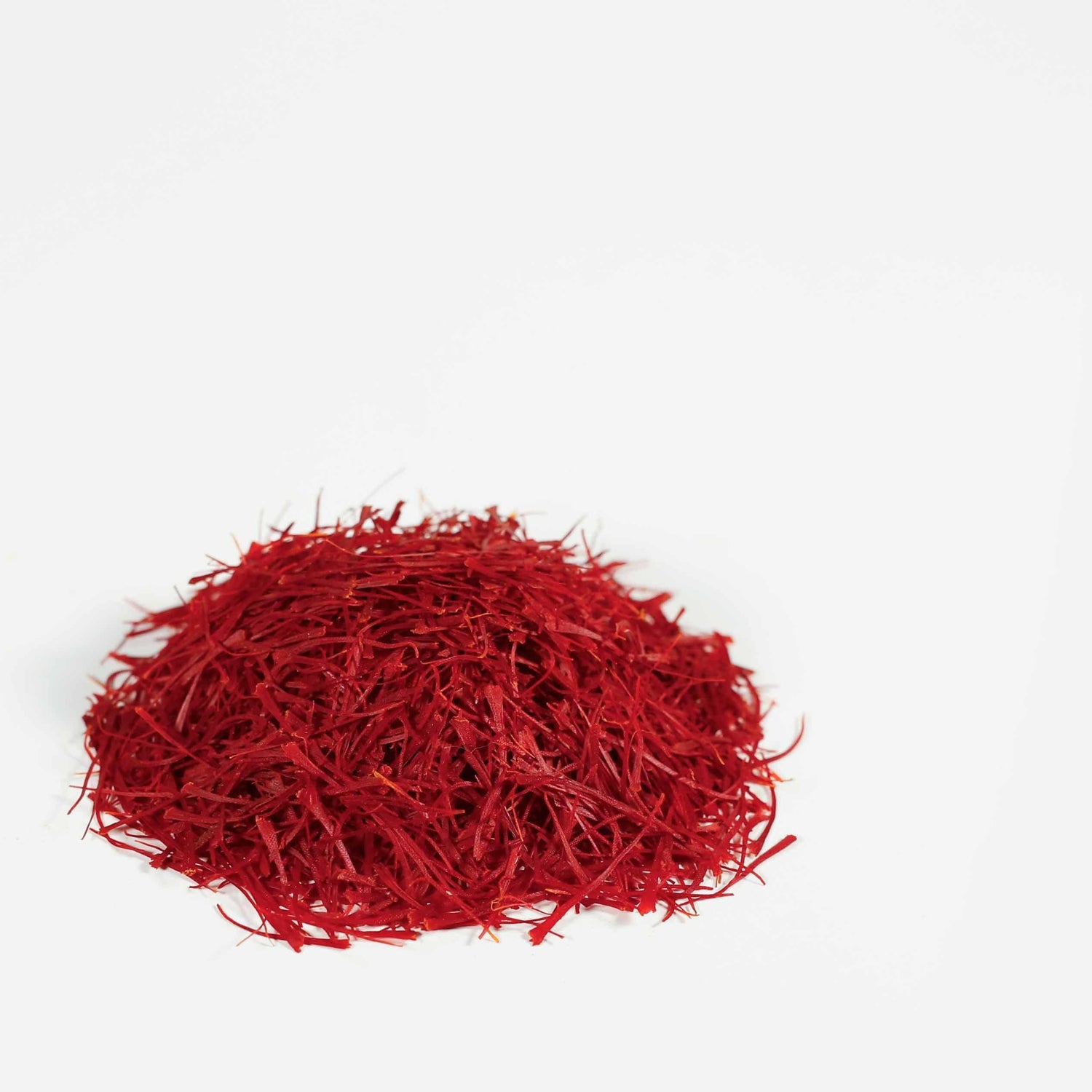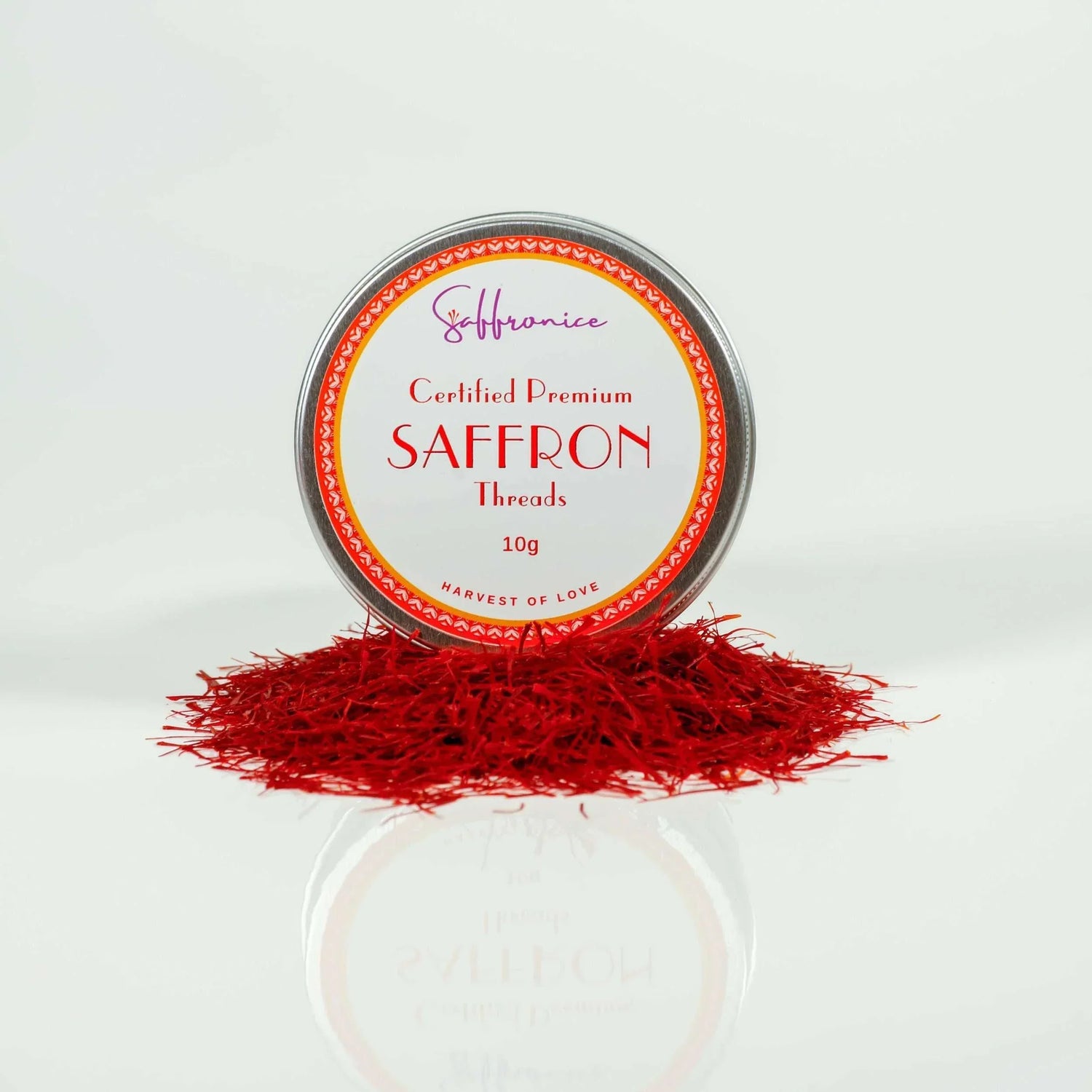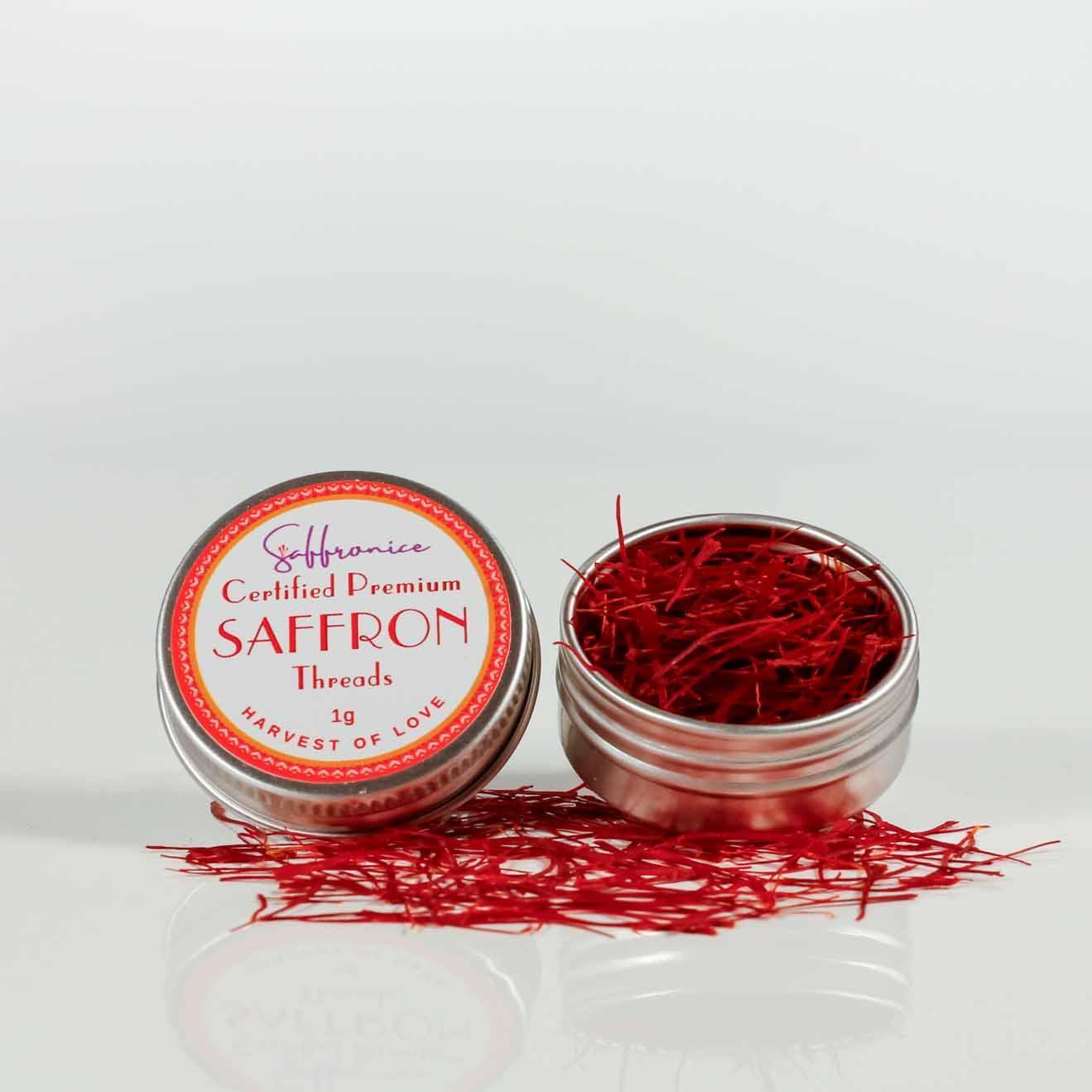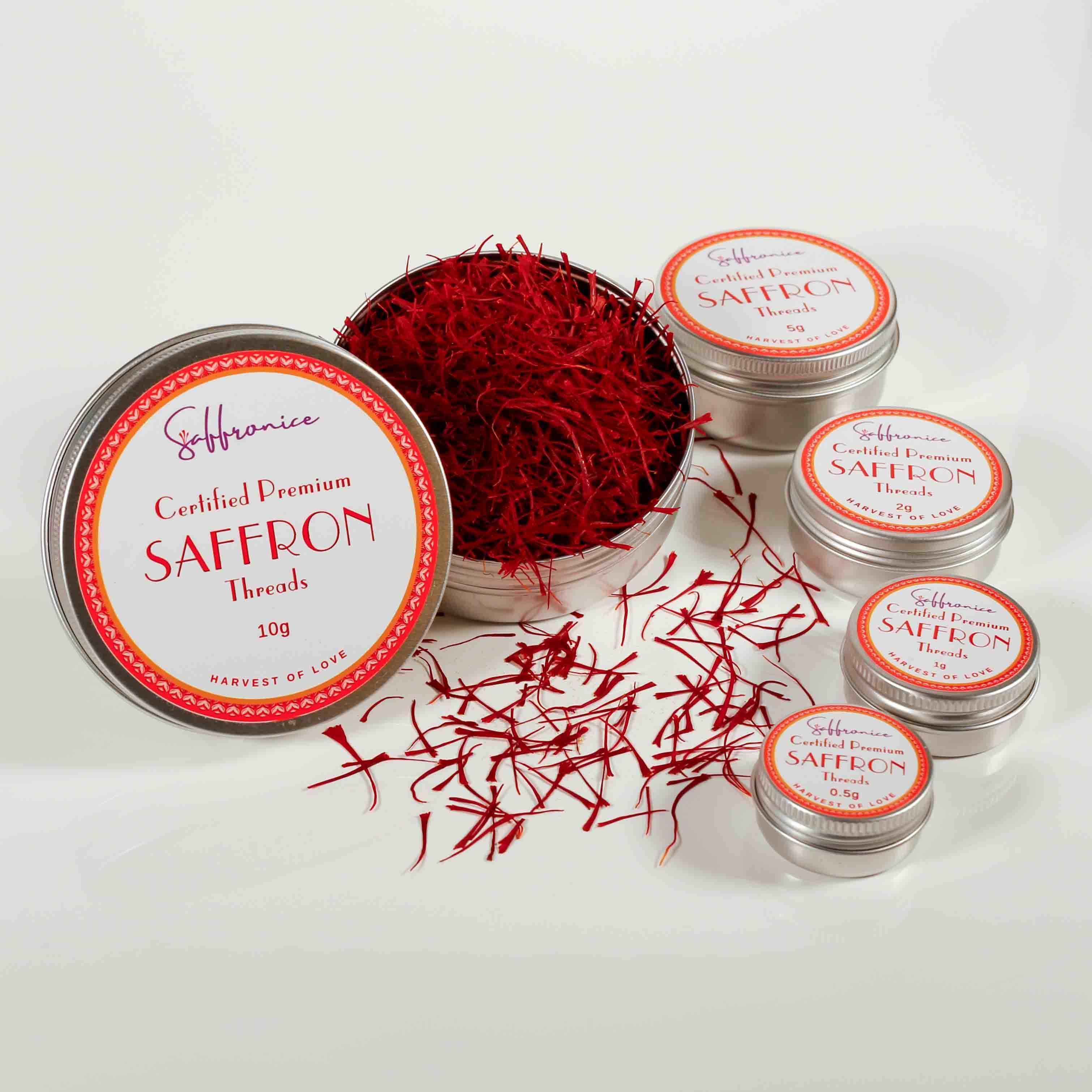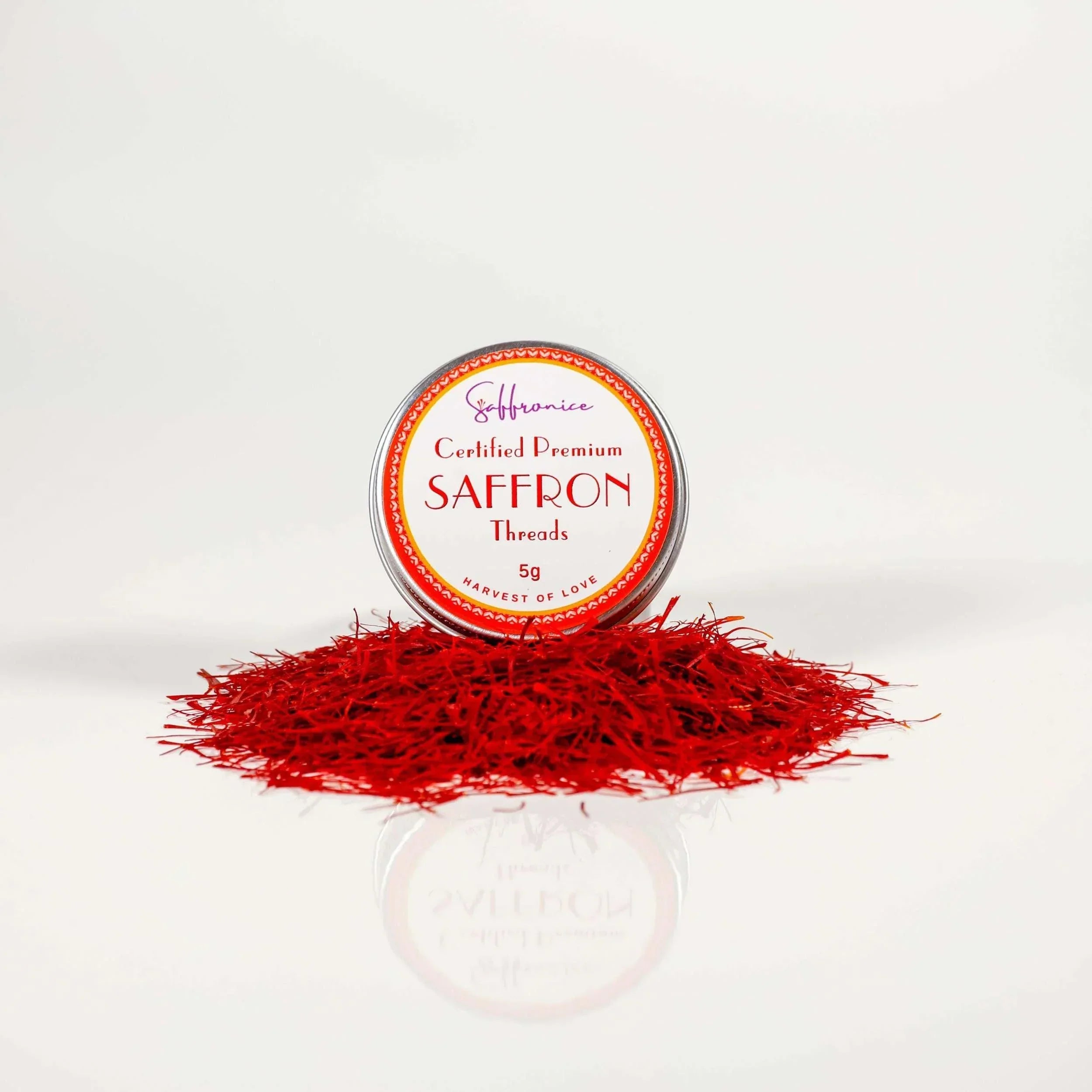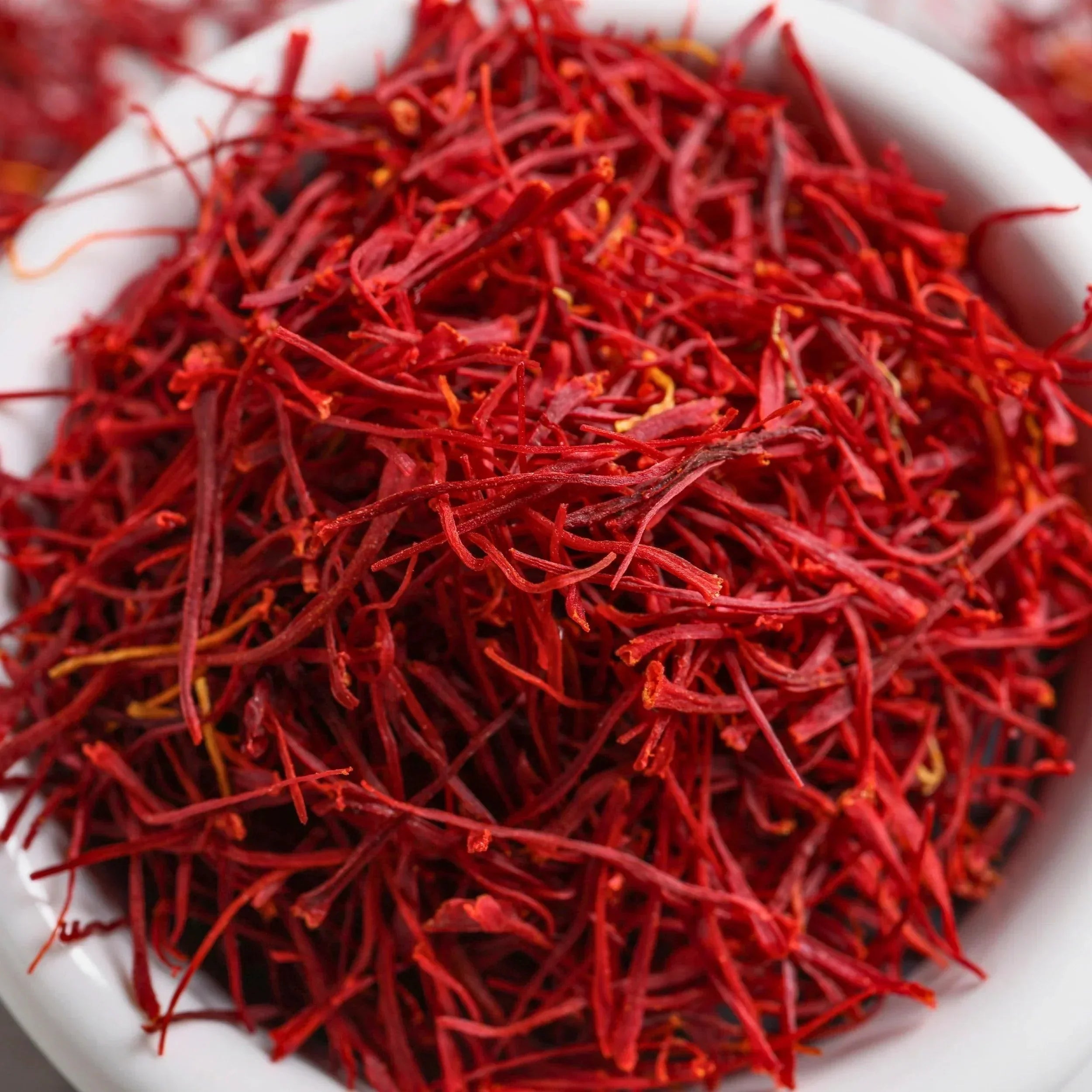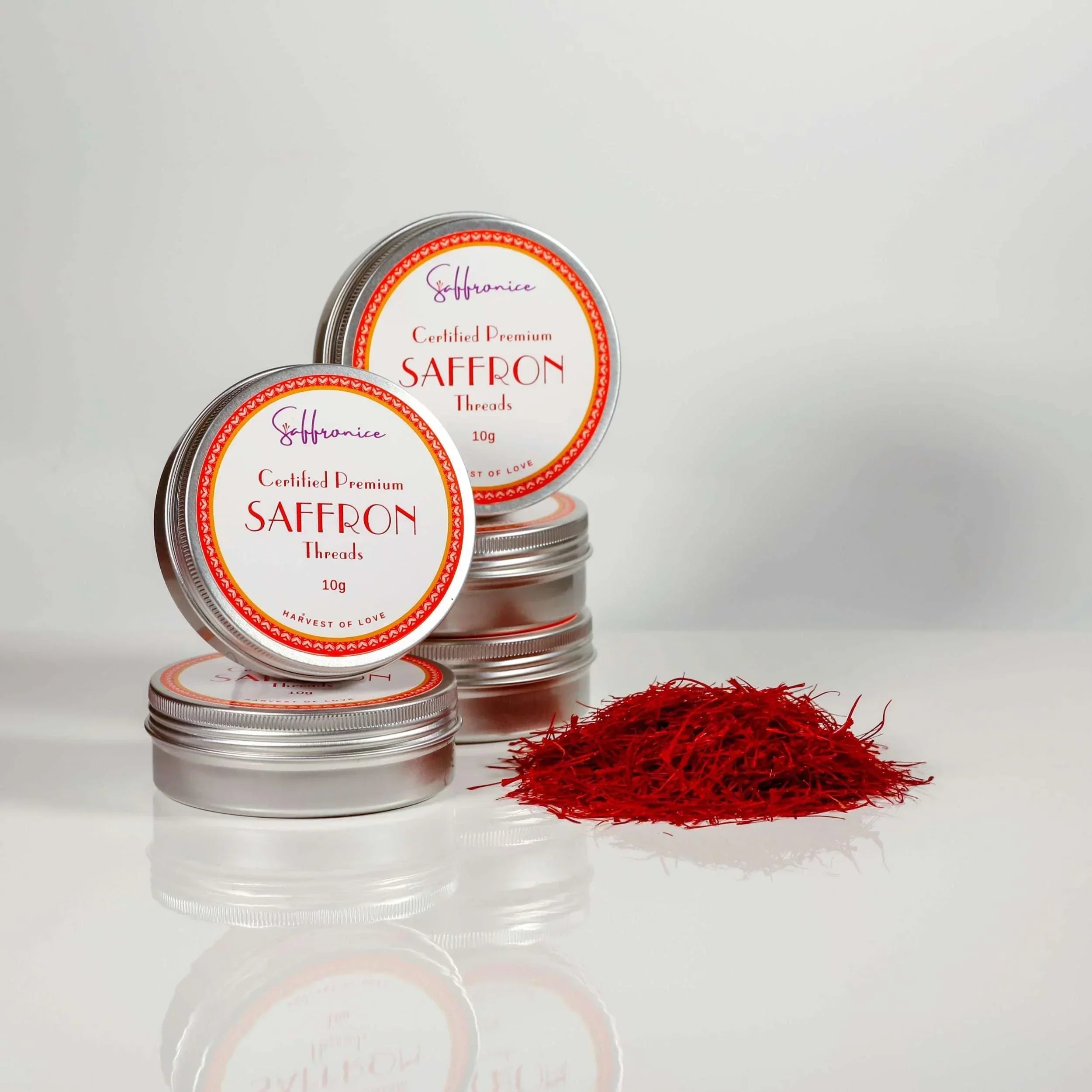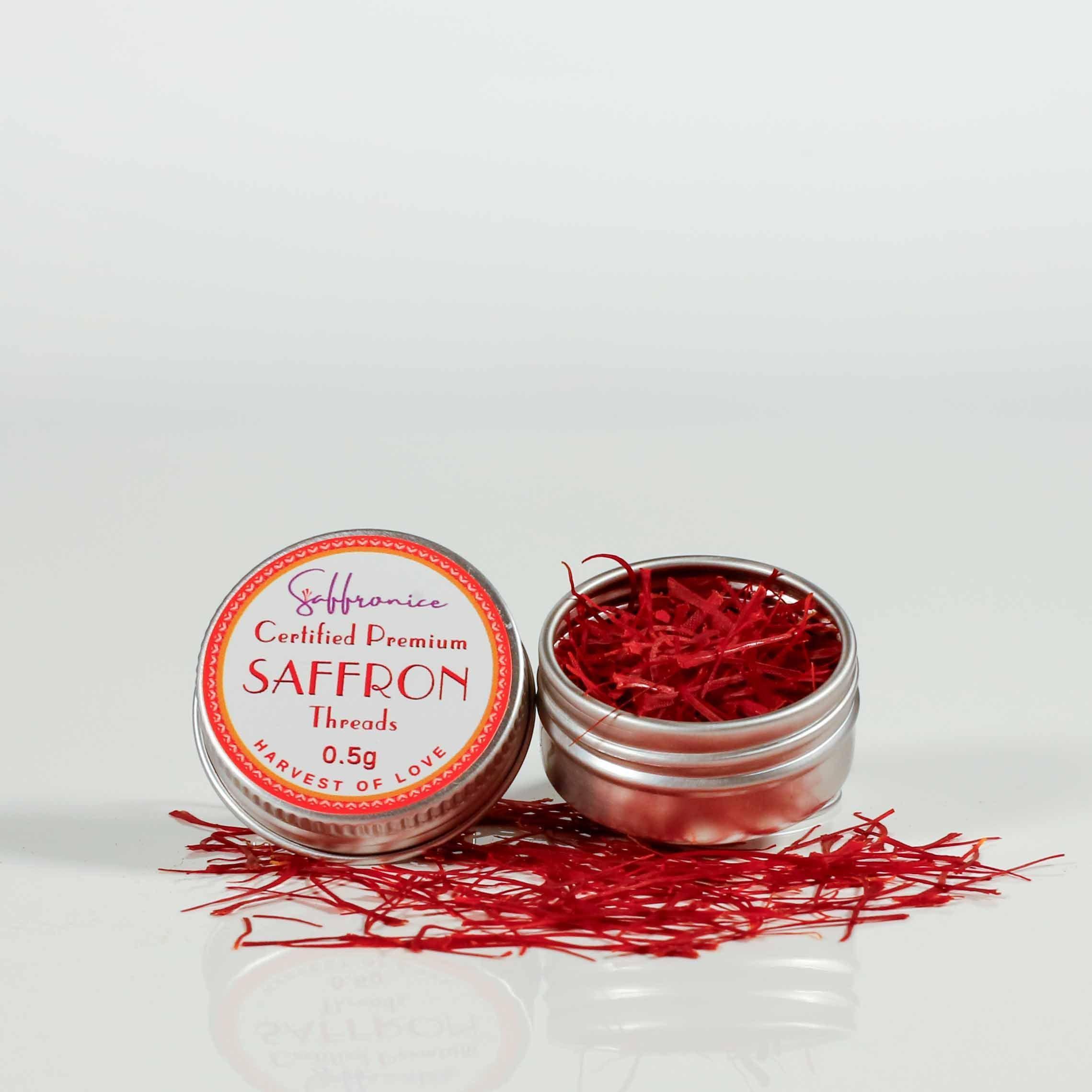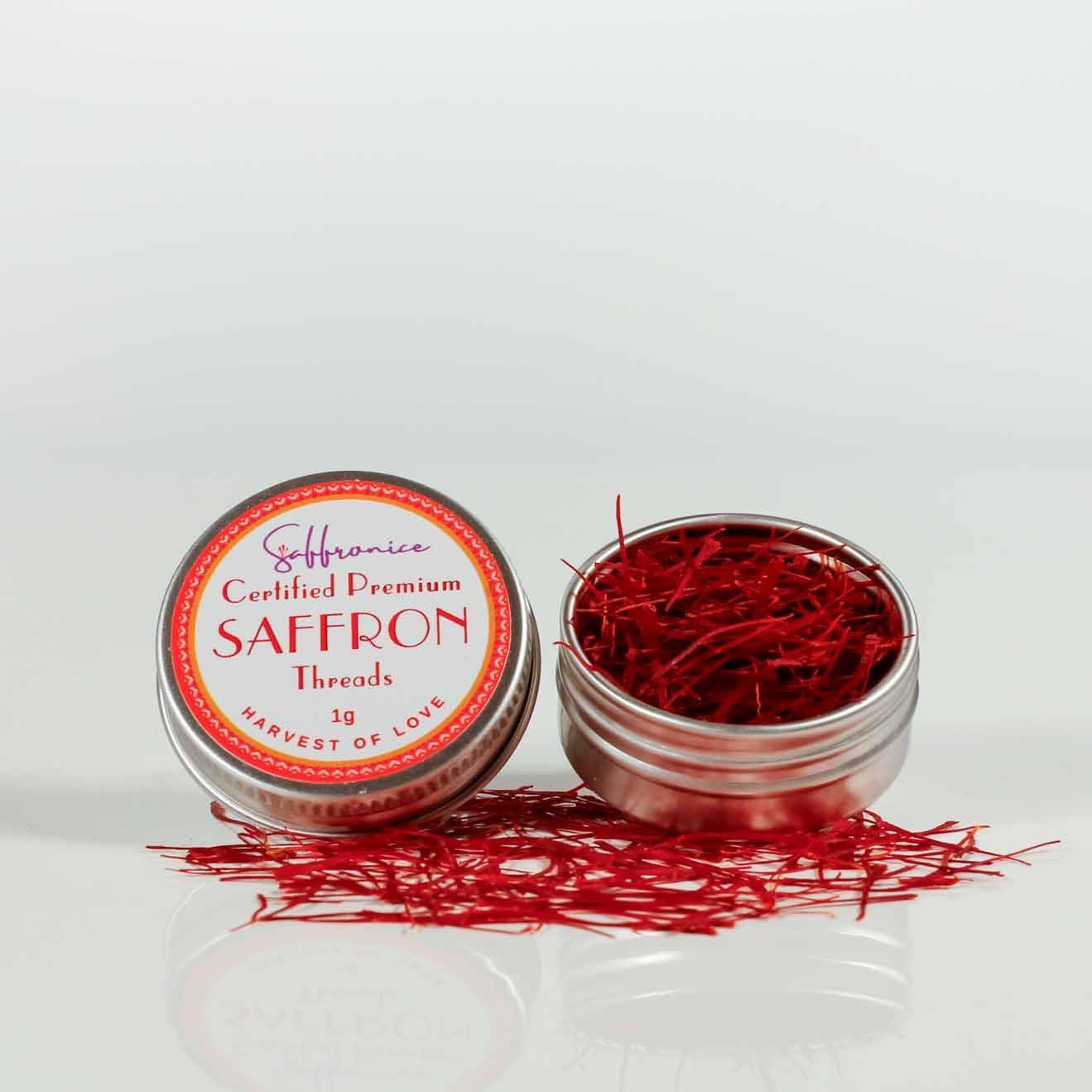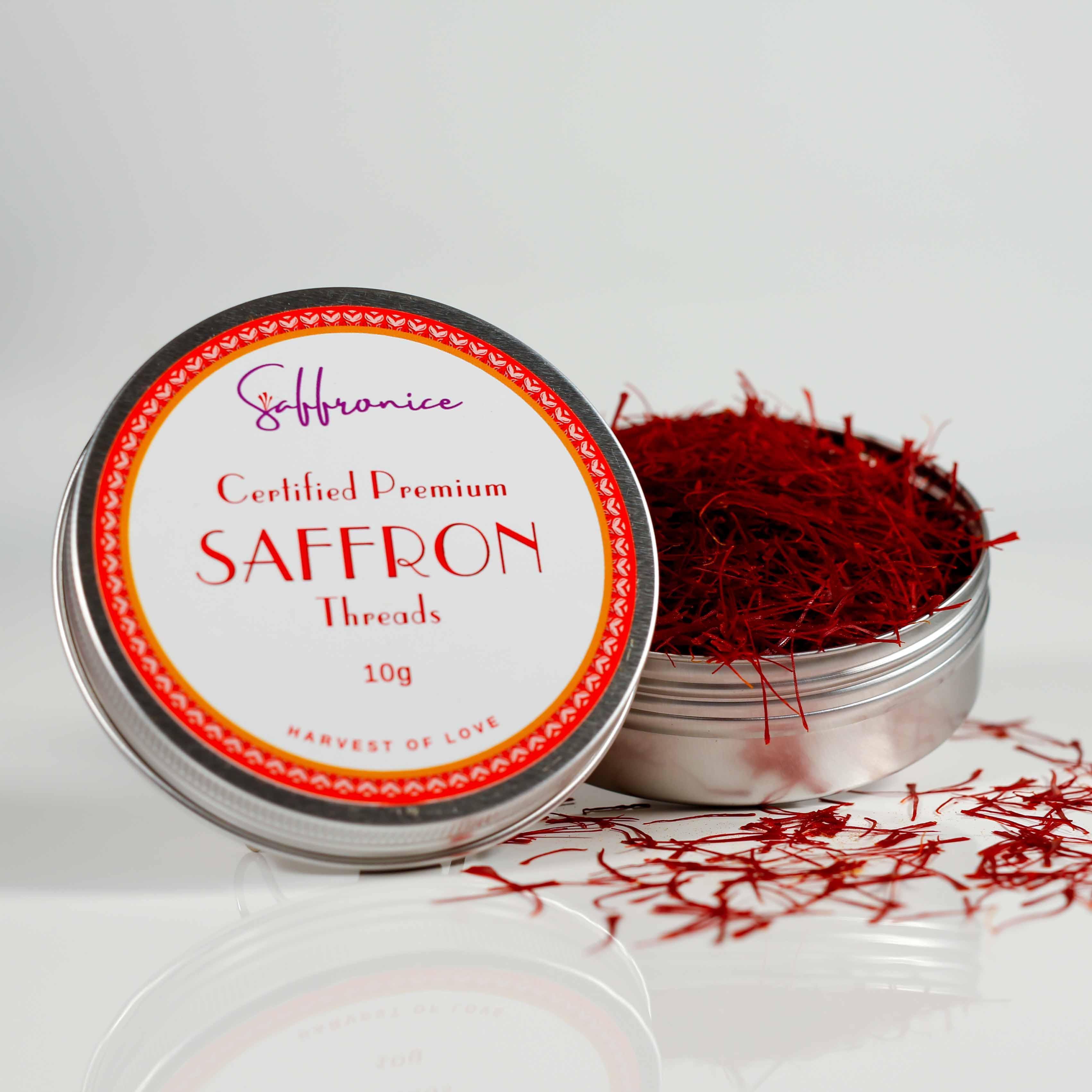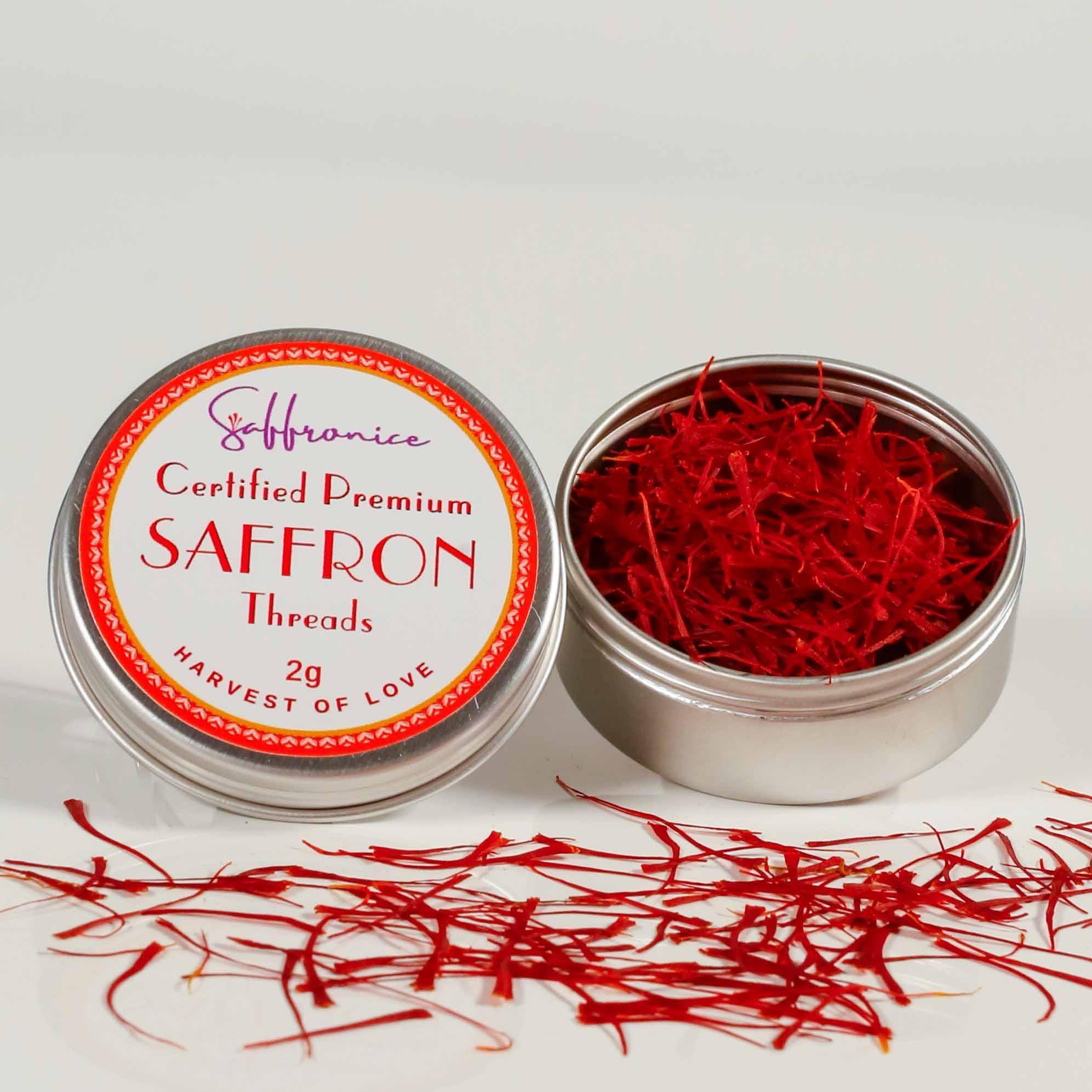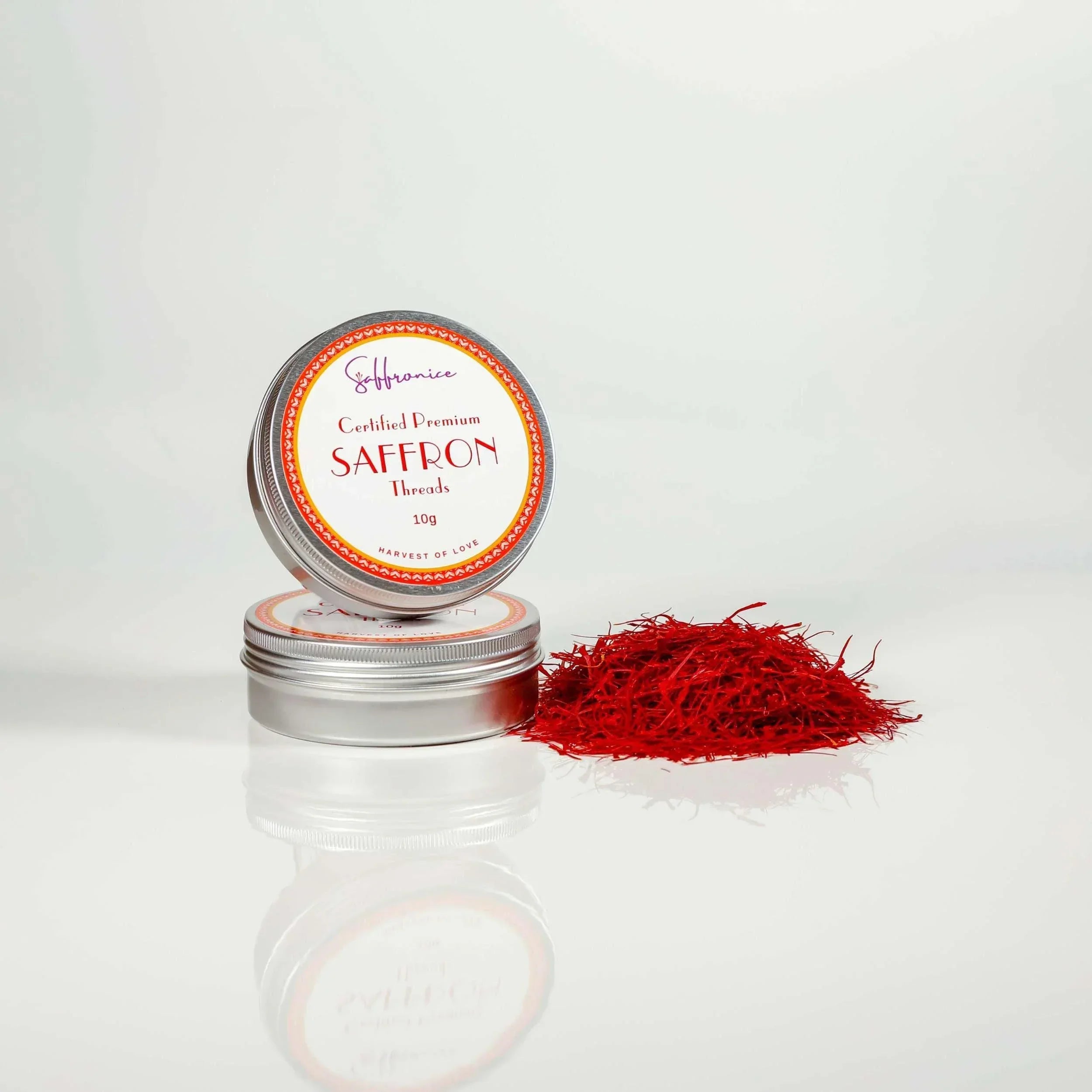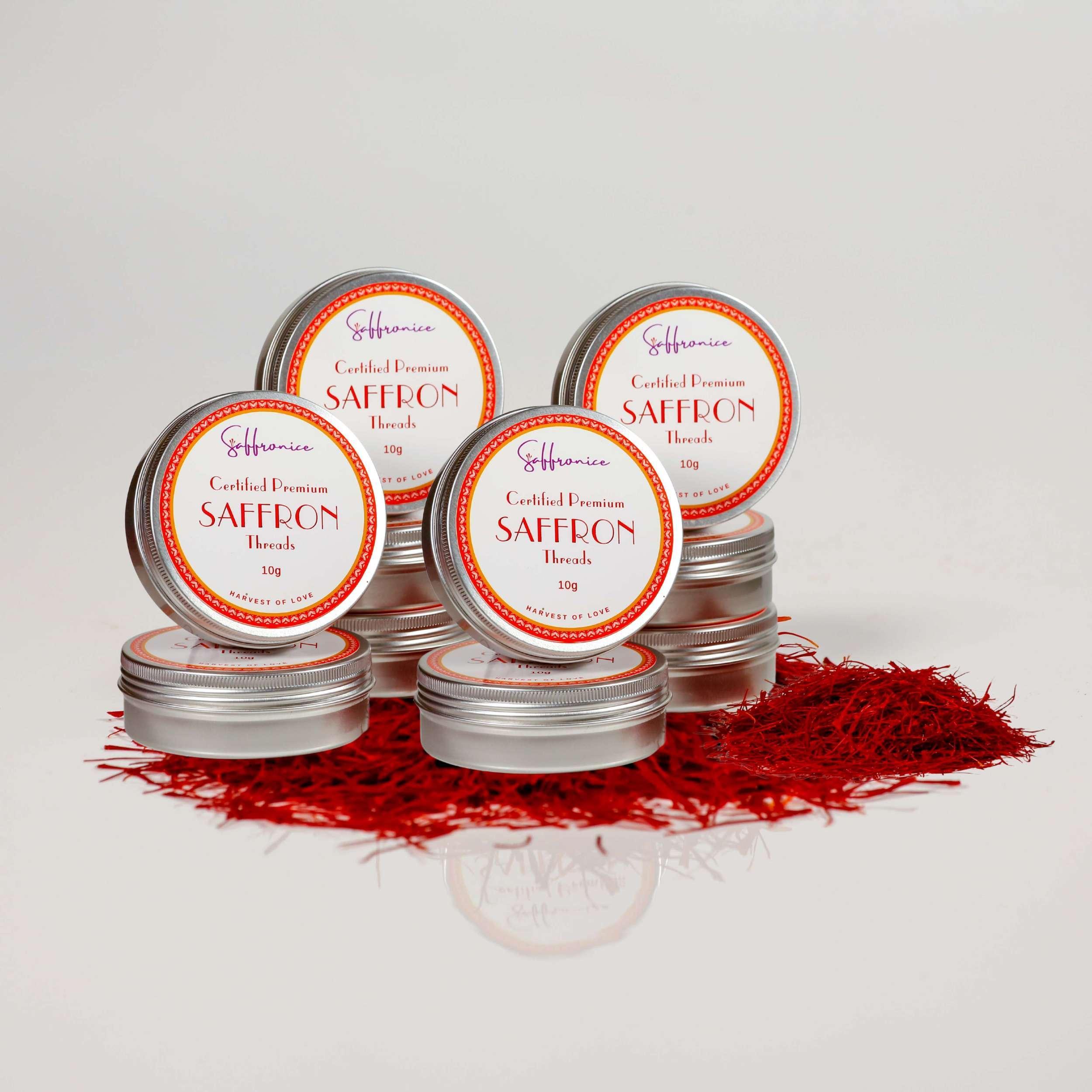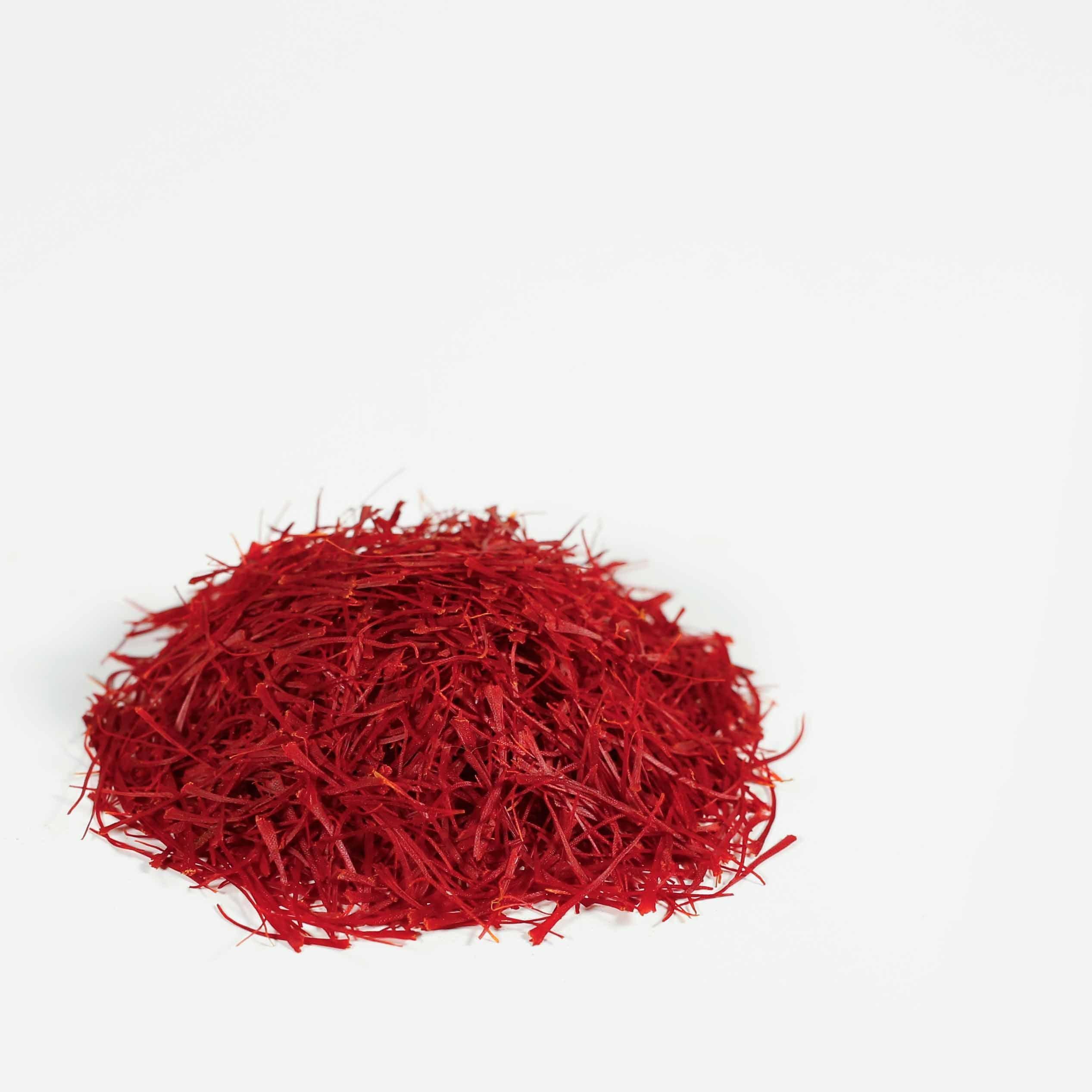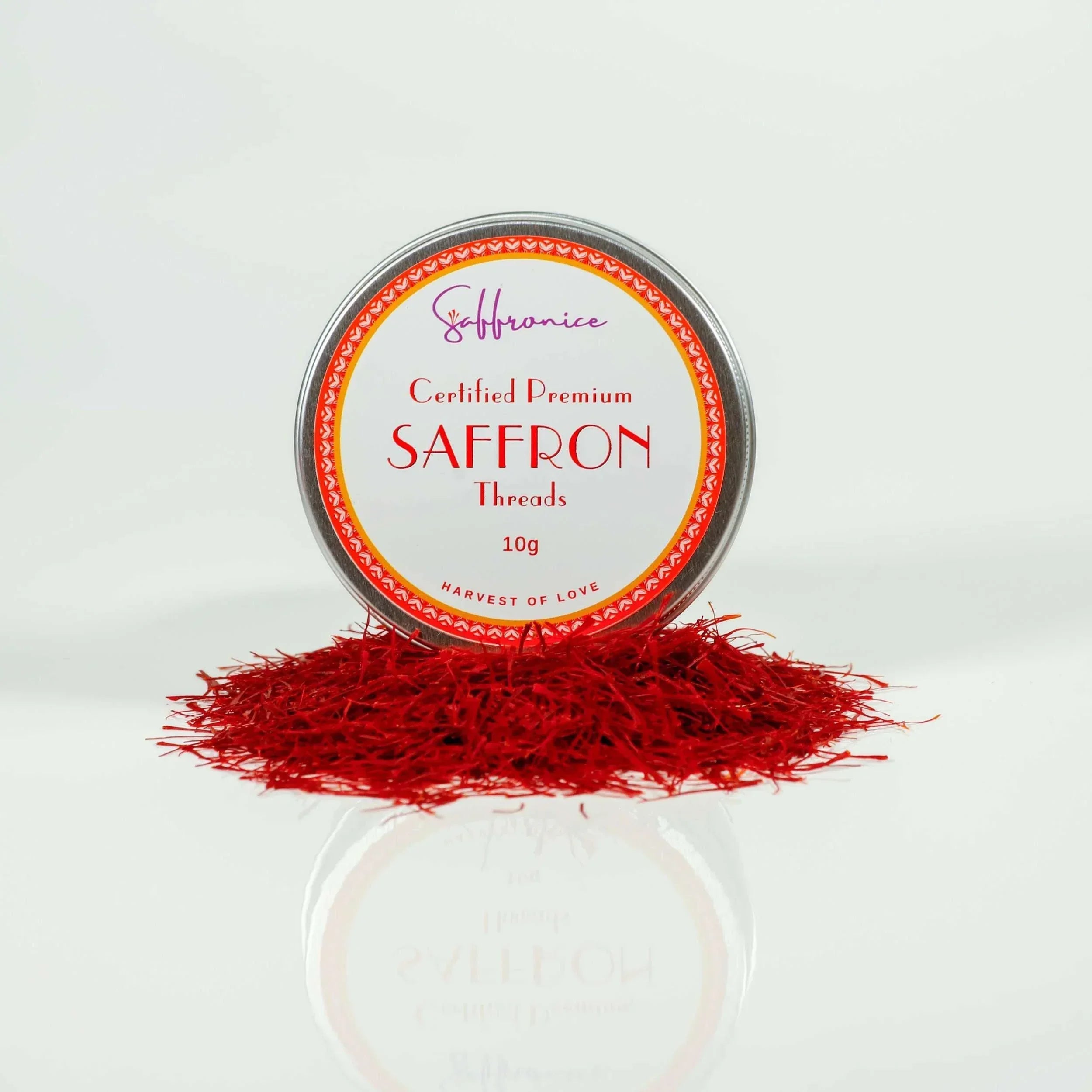Saffron is not only known for its culinary uses but also for its incredible benefits in skincare. It comes from the delicate stigmas of the Crocus sativus flower and has been a highly sought-after ingredient in beauty rituals around the world for centuries (Melnyk et al., 2010). Ancient civilizations like Egypt and Persia valued this golden spice for its ability to improve complexion and promote healthy skin (Srivastava et al., 2010).
Understanding the benefits of saffron for skin is important for today's skincare enthusiasts. Saffron contains a wide range of antioxidants, anti-inflammatory compounds, and essential nutrients that can address various skin issues(Asdaq & Inamdar, 2010). Whether it's reducing acne and dark spots or giving your skin a natural glow, saffron has transformative qualities.
Key Takeaway
Saffron is more than just a spice; it has powerful properties that can transform your skin.
Exploring saffron in homemade skincare recipes shows how versatile it is. Whether used in face masks or infused oils, saffron provides a luxurious experience that's both effective and pampering.
In this article, we will explore the science behind saffron's radiance, its main benefits for skin health, and practical tips on how to incorporate this precious spice into your skincare routine.
The Science Behind Saffron's Glow

What is Saffron and Where Does It Come From?
Saffron, derived from the Crocus sativus flower, is renowned for its vibrant color and unique aromatic properties. This exotic spice originates from regions like Greece and Iran, where it has been harvested for centuries(Alavi et al., 2018). The real magic of saffron lies in its active compounds:
- Crocin
- Crocetin
- Safranal
These compounds are responsible for saffron's powerful effects on the skin(Ashraf & Ahmad, 2021).
How Antioxidants Benefit Your Skin
Antioxidants play a crucial role in maintaining healthy skin by neutralizing free radicals that cause cellular damage. Saffron is rich in antioxidants, particularly crocin and crocetin, which help:
- Combat oxidative stress
- Promote collagen synthesis
- Enhance skin elasticity
By incorporating saffron into your skincare routine, you can harness these antioxidant properties to achieve a radiant complexion(Bolhassani et al., 2014).
The Soothing Effects of Saffron's Aroma
Saffron's luxurious feel on the skin isn't just due to its active compounds but also its unique aromatic profile. Safranal, one of the key aromatic compounds in saffron, contributes to its distinct scent and soothing properties(Rezaee & Hosseinzadeh, 2013). When applied to the skin, products infused with safranal provide a sensory experience that elevates your skincare routine.
Key Takeaways
- Saffron for glowing skin: The combination of antioxidants and unique aromatic compounds makes saffron an excellent choice for enhancing your skin's natural glow.
- How saffron helps skin tone: Through the action of crocin and crocetin, saffron promotes even skin tone and reduces hyperpigmentation.
Understanding these scientific aspects of saffron can help you appreciate why this ancient spice continues to be celebrated in modern skincare.
Key Benefits of Saffron for Skin Health and Beauty
1. Anti-Inflammatory Properties
Saffron has strong anti-inflammatory properties, making it helpful in treating skin issues like acne and rosacea. The active compounds in saffron, especially crocin and safranal, reduce redness and swelling by blocking the release of pro-inflammatory cytokines. This action can calm irritated skin and lessen the appearance of blemishes.
2. Mechanism of Action on Melanin Production
One of the remarkable benefits of saffron is its ability to influence melanin production. By regulating tyrosinase activity, an enzyme crucial for melanin synthesis, saffron can help lighten dark spots and hyperpigmentation(Sharifi et al., 2021). Saffron for skin whitening is supported by studies that demonstrate its effectiveness against uneven pigmentation, making it a natural choice for those seeking a more uniform complexion.
3. UV Protection
Another significant benefit of saffron is its ability to protect the skin from harmful UV radiation. Saffron is rich in antioxidants like crocetin, which help shield skin cells from UV-induced damage(Javadi et al., 2013). These antioxidants neutralize free radicals, preventing oxidative stress that can lead to premature aging and skin cancer.
4. Oxidative Stress Reduction
Oxidative stress speeds up skin aging and deterioration, but saffron fights this with its high antioxidant content. The flavonoids and carotenoids present in saffron scavenge free radicals, which cause cellular damage(Bolhassani et al., 2014). This process not only delays signs of aging but also improves overall skin resilience.
5. Anti-Aging Ingredient
Saffron stands out as an effective anti-aging ingredient due to its various actions. It promotes collagen synthesis, which keeps the skin elastic and firm(Umigai et al., 2011). The combined antioxidative and anti-inflammatory effects contribute to reducing fine lines and wrinkles, giving a youthful glow.
Integrating saffron into skincare routines provides these diverse benefits, aligning with modern goals for healthy, radiant skin.
Saffron Face Masks: A Luxurious Treat for Your Skin
Saffron face masks are a luxurious way to enjoy the many benefits this spice offers for your skin. Designed for different skin types, these masks can target specific issues while also providing a sensory experience.
For Dry Skin
Dry skin needs extra moisture and nourishment. A saffron face mask can provide both with its hydrating properties.
Ingredients:
- 2-3 strands of saffron
- 1 tablespoon honey
- 1 tablespoon milk or yogurt
Mix the ingredients together, letting the saffron soak in for a few minutes. Apply the mixture to your face and leave it on for 15-20 minutes before rinsing off with lukewarm water.
For Oily Skin
Oily skin benefits from ingredients that help balance oil production without drying it out completely. Saffron's anti-inflammatory properties can assist in maintaining this balance.
Ingredients:
- 2-3 strands of saffron
- 1 tablespoon sandalwood powder
- Rosewater as needed to form a paste
Combine the ingredients into a smooth paste and apply an even layer to your face. Let it sit for 15 minutes before rinsing with cool water.
For Sensitive Skin
Sensitive skin requires gentle care. Saffron's soothing properties make it an excellent choice for reducing redness and irritation.
Ingredients:
- 2-3 strands of saffron
- 1 tablespoon aloe vera gel
- A few drops of chamomile essential oil (optional)
Blend these components thoroughly and apply the mask gently. Leave it on for about 10-15 minutes before washing off with lukewarm water.
Benefits of Saffron Face Masks
Here are some of the benefits you can expect from using saffron face masks:
- Hydration: Saffron infuses moisture into the skin, making it ideal for dry skin types.
- Sebum Regulation: Helps balance oil production, beneficial for oily skin.
- Soothing Properties: Reduces redness and irritation, perfect for sensitive skin.
Saffron face masks offer a luxurious spa-like experience at home while addressing specific skincare needs. Whether you're dealing with dryness, oiliness, or sensitivity, there's a saffron mask recipe tailored just for you.
Incorporating Saffron into Your Skincare Routine: Practical Tips and Precautions
Effective Methods for Acne Treatments
Saffron can be a game-changer for those battling acne. Its anti-inflammatory and antimicrobial properties target the root causes of breakouts, helping to reduce redness and prevent bacterial infections(Nam et al., 2010).
- Spot Treatments: Mix a few strands of saffron with honey or aloe vera gel. Apply directly to the affected area, leaving it on for 15-20 minutes before rinsing with lukewarm water.
- Face Masks: Combine saffron with sandalwood powder and rosewater to create a soothing mask. This blend not only fights acne but also leaves your skin feeling refreshed and glowing.
Addressing Dark Circles
Dark circles can be stubborn, but saffron-infused products provide a natural remedy. The compound crocin in saffron enhances blood circulation and reduces pigmentation, making it effective against dark under-eye circles(Sharifi et al., 2021).
- Saffron Creams: Opt for eye creams that feature saffron as a key ingredient. These creams are designed to be gentle yet effective, often combined with hydrating components like hyaluronic acid.
- DIY Saffron Oil: Make your own by soaking a few saffron strands in almond oil overnight. Gently massage the oil around your eyes before bedtime to see noticeable improvements over time.
Precautions
While saffron offers numerous benefits, it's crucial to perform a patch test before incorporating it into your routine. This step helps avoid potential allergic reactions or contact dermatitis.
- Patch Test: Apply a small amount of the saffron mixture on your wrist or behind your ear and wait 24 hours to check for any adverse reactions.
- Pregnancy Caution: Pregnant women should consult their healthcare provider before using saffron-infused products due to potential risks.
By following these practical tips, you can safely integrate the potent benefits of saffron into your skincare regimen, achieving healthier, more radiant skin.

Exploring the Best Saffron-Infused Skincare Products on the Market
Navigating the world of saffron-infused skincare products can be both exciting and overwhelming. Here are some popular options that feature saffron as a key ingredient:
1. Kumkumadi Tailam
This traditional Ayurvedic serum combines saffron with other potent ingredients like sandalwood, turmeric, and vetiver. Known for its ability to brighten the skin and reduce dark spots, Kumkumadi Tailam is a luxurious addition to any skincare routine(Singh et al., 2018).
2. Forest Essentials Soundarya Radiance Cream
Containing 24-karat gold and saffron, this cream promises to enhance radiance and combat signs of aging. It’s enriched with herbs like ashwagandha and licorice, which work in synergy with saffron to nourish the skin deeply.
3. L'Occitane Immortelle Divine Youth Oil
Blending saffron with essential oils like evening primrose and borage seed oil, this product aims to rejuvenate the skin while providing intense hydration. It's ideal for those looking to add a youthful glow.
4. Korres Wild Rose + Vitamin C Advanced Brightening Sleeping Facial
This overnight treatment features saffron along with wild rose oil and vitamin C. The combination helps to brighten the complexion and even out skin tone while you sleep.
Key Ingredients to Look For
To maximize the benefits of saffron in skincare, look for products containing complementary ingredients such as:
- Vitamin C: Enhances brightening effects.
- Hyaluronic Acid: Provides deep hydration.
- Niacinamide: Improves skin elasticity and barrier function.
- Turmeric: Amplifies anti-inflammatory properties.
These elements not only enhance the effectiveness of saffron but also provide additional benefits tailored to various skincare needs.
DIY Saffron Oil: A Luxurious Addition to Your Skincare Arsenal
Creating your own saffron oil at home is a rewarding experience that brings the luxurious benefits of saffron straight to your skincare routine. Here's a simple step-by-step guide to making DIY saffron oil for skin:
Ingredients:
- Saffron threads: 10-15 high-quality threads
- Carrier oil: 2 tablespoons (e.g., jojoba oil, almond oil, or argan oil)
- Mortar and pestle: For crushing saffron threads
- Glass jar: With a tight-sealing lid
Instructions:
- Crush the Saffron Threads
- Using a mortar and pestle, gently crush the saffron threads until they become a fine powder. This helps release the active compounds into the oil.
- Combine Saffron and Carrier Oil
- Transfer the crushed saffron into your glass jar and pour in the carrier oil of your choice. Mix well to ensure the saffron is evenly distributed.
- Infuse the Oil
- Seal the jar tightly and place it in a dark, cool area for about two weeks. Shake the jar gently every couple of days to aid in the infusion process.
- Strain and Store
- After two weeks, strain the oil using a fine-mesh sieve or cheesecloth to remove any remaining saffron particles. Store your saffron-infused oil in a clean, amber-colored bottle to protect it from light exposure.
Tips for Use:
- Apply a few drops of saffron oil directly to your face after cleansing, focusing on areas with hyperpigmentation or dryness.
- Mix with your favorite moisturizer to enhance its hydrating properties.
- Use as an overnight treatment by massaging a small amount onto your face before bed.
Embrace this luxurious treat in your skincare regimen and enjoy the glowing benefits of saffron!
Conclusion: Embrace the Power of Saffron in Your Skincare Journey!
Saffron, with its rich historical uses in beauty rituals, is a powerful natural ingredient for skincare. Its many benefits, such as reducing inflammation and fighting oxidative stress, make it a valuable addition to any skincare routine(Ashraf & Ahmad, 2021). With its strong properties, saffron for skincare can transform your skin, giving you a radiant and healthy glow.
Trying out natural remedies that include this precious spice can be both indulgent and effective. Explore saffron-infused products or make your own DIY treatments to fully experience its benefits. Your skin will be grateful!
FAQs (Frequently Asked Questions)
What are the key benefits of saffron for skin health?
Saffron offers several key benefits for skin health, including anti-inflammatory properties that can help treat conditions like acne and rosacea (Nam et al., 2010). It also aids in reducing pigmentation and dark spots by affecting melanin production (Sharifi et al., 2021). Additionally, saffron provides protective effects against UV radiation and combats oxidative stress, making it a powerful anti-aging ingredient (Javadi et al., 2013).
How can I incorporate saffron into my skincare routine?
You can incorporate saffron into your skincare routine by using it in DIY face masks or as an ingredient in spot treatments for acne. Saffron-infused creams or oils can be effective for addressing dark circles. It's important to use saffron in moderation and test for any allergic reactions, especially if you have sensitive skin.
Are there any specific saffron face masks for different skin types?
Yes, homemade saffron face masks can be tailored to suit different skin types. For dry skin, you might combine saffron with moisturizing ingredients like honey or yogurt. Oily skin may benefit from masks that include sandalwood powder or rosewater alongside saffron. Sensitive skin should use gentle formulations with soothing agents like aloe vera.
What is the science behind saffron's effectiveness for glowing skin?
The effectiveness of saffron for glowing skin is attributed to its active compounds such as crocin, crocetin, and safranal, which possess antioxidant properties (Ashraf & Ahmad, 2021). These compounds help combat oxidative stress and promote healthy skin tone by enhancing blood circulation and reducing inflammation, leading to a radiant complexion.
Can I make my own saffron oil at home?
Yes, you can make your own saffron oil at home! The process involves infusing high-quality saffron threads in a carrier oil (like jojoba or almond oil) over a period of time. This homemade saffron oil can be used effectively in your skincare routine to enhance hydration and provide the numerous benefits of saffron.
What are some popular saffron-infused skincare products available on the market?
There are several popular saffron-infused skincare products available that leverage the benefits of this precious spice. Examples include Kumkumadi Tailam, Forest Essentials Soundarya Radiance Cream, L'Occitane Immortelle Divine Youth Oil, and Korres Wild Rose + Vitamin C Advanced Brightening Sleeping Facial. When looking for these products, consider those that also include complementary ingredients like hyaluronic acid or vitamin C to enhance efficacy.
References
Alavi, S. H., Karimi, M., & Safa, M. (2018). Saffron and its derivatives: An updated review on chemistry, pharmacology and toxicology. Iranian Journal of Basic Medical Sciences, 21(10), 1080–1089.
Ashraf, S., & Ahmad, S. R. (2021). Potential application of saffron and its active constituents in cosmetic industry. Journal of Ethnopharmacology, 276, 114174. https://doi.org/10.1016/j.jep.2021.114174
Asdaq, S. M. B., & Inamdar, M. N. (2010). Potential of Crocus sativus (saffron) and its constituent, crocin, as therapeutic agents in the management of various diseases: A review. African Journal of Pharmacy and Pharmacology, 4(6), 313–318.
Bolhassani, A., Khavari, A., & Bathaie, S. Z. (2014). Saffron and natural carotenoids: Biochemical activities and anti-tumor effects. Biochimica et Biophysica Acta (BBA) - Reviews on Cancer, 1845(1), 20–30.
Javadi, B., Sahebkar, A., & Emami, S. A. (2013). A survey on saffron in major Islamic traditional medicine books. Iranian Journal of Basic Medical Sciences, 16(1), 1–11.
Melnyk, J. P., Wang, S., & Marcone, M. F. (2010). Chemical and biological properties of the world's most expensive spice: Saffron. Food Research International, 43(8), 1981–1989.
Nam, K. N., Park, Y. M., Jung, H. J., Lee, J. Y., Min, B. D., Park, S. U., ... & Kang, I. (2010). Anti-inflammatory effects of crocin and crocetin in rat brain microglial cells. European Journal of Pharmacology, 648(1-3), 110–116.
Rezaee, R., & Hosseinzadeh, H. (2013). Safranal: From an aromatic natural product to a rewarding pharmacological agent. Iranian Journal of Basic Medical Sciences, 16(1), 12–26.
Sharifi, S., Mortazavi, S. A., & Arjmand, M. (2021). The effect of Crocus sativus L. extract on melanogenesis in B16F10 melanoma cells. Pharmaceutical Biology, 59(1), 316–324.
Singh, N., Rajesh, V., & Kumar, S. (2018). An overview on traditional uses and pharmacological profile of saffron (Crocus sativus L.). Journal of Pharmaceutical and Phytochemical Research, 10(3), 380–385.
Srivastava, R., Ahmed, H., Dixit, R. K., & Saraf, S. A. (2010). Crocus sativus L.: A comprehensive review. Pharmacognosy Reviews, 4(8), 200–208.
Umigai, N., Murakami, K., Ulit, M. V., Antonio, L. S., Shirotori, S., & Morikawa, T. (2011). The anti-oxidative and anti-aging effects of crocetin and crocin from saffron on humans. Journal of Traditional Medicines, 28(1), 1–6.


